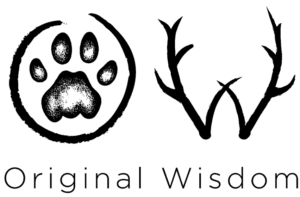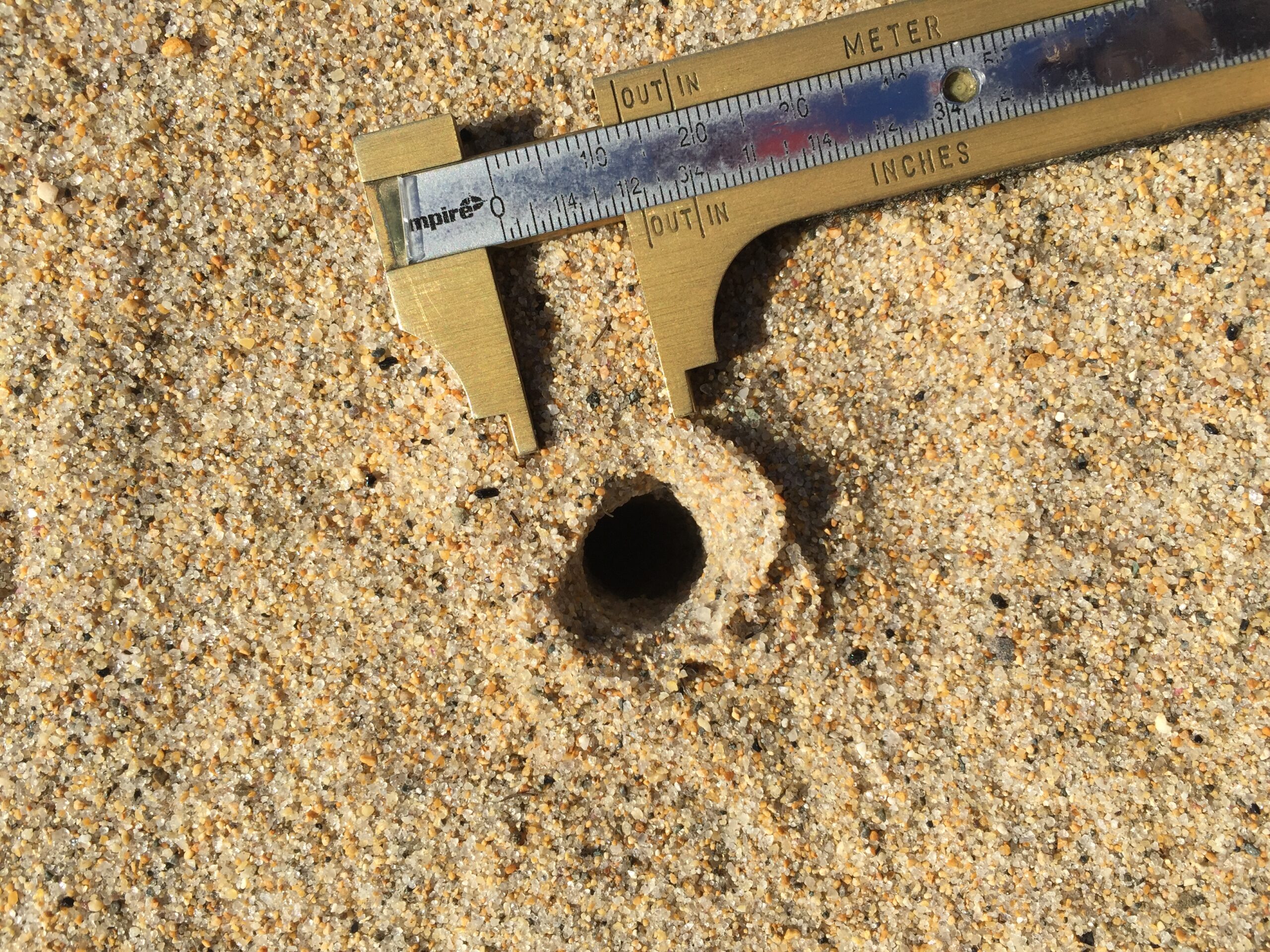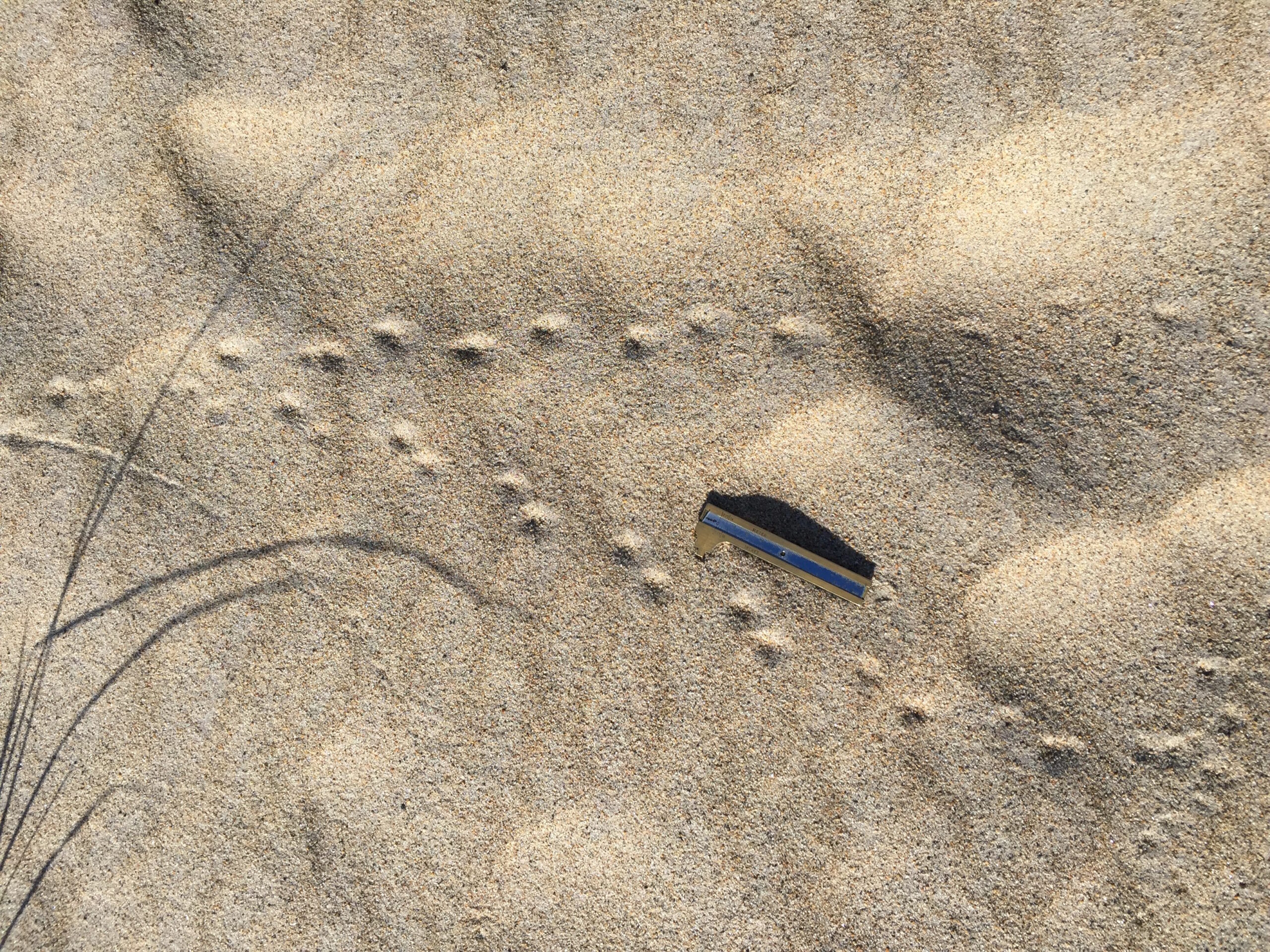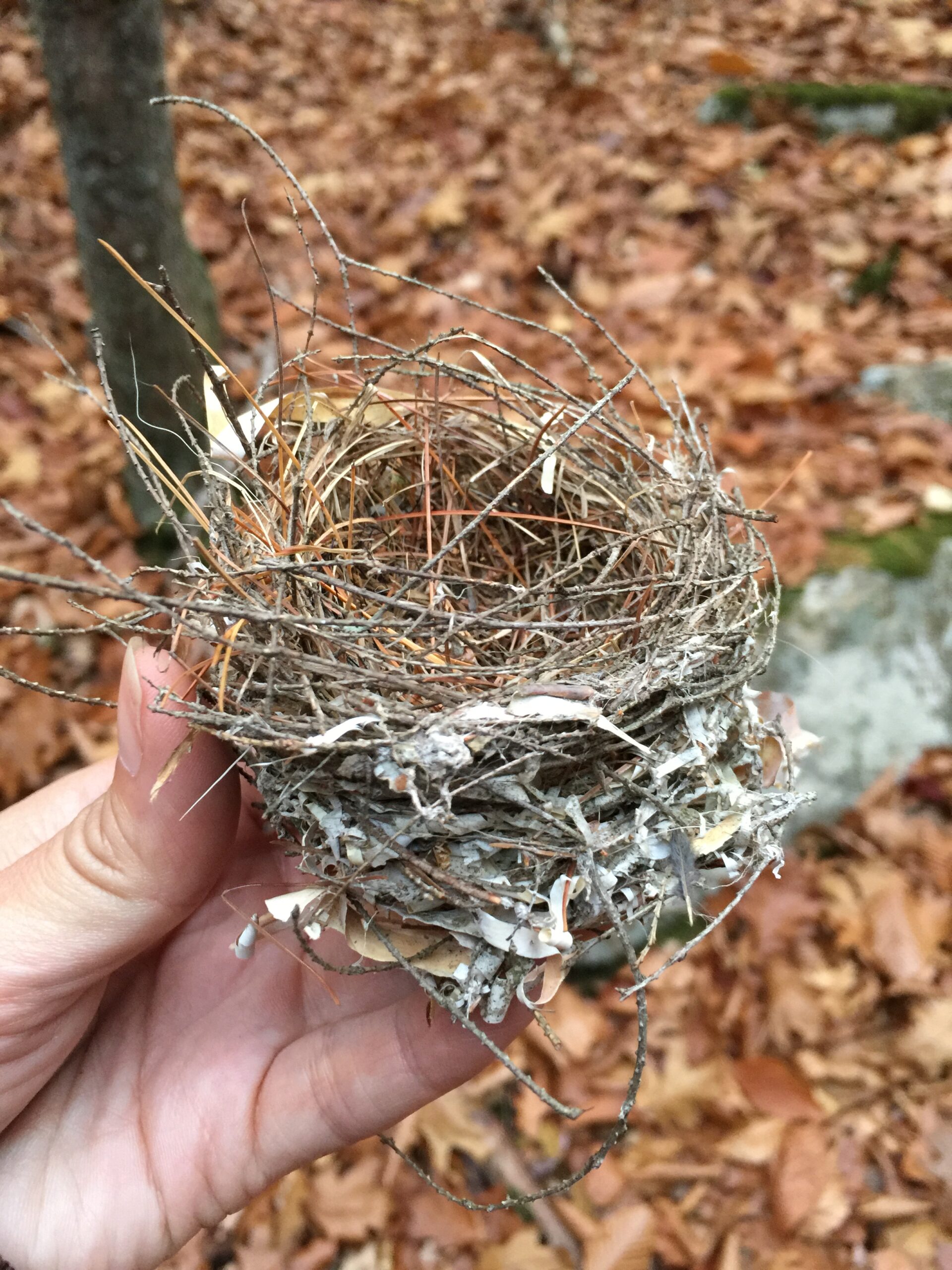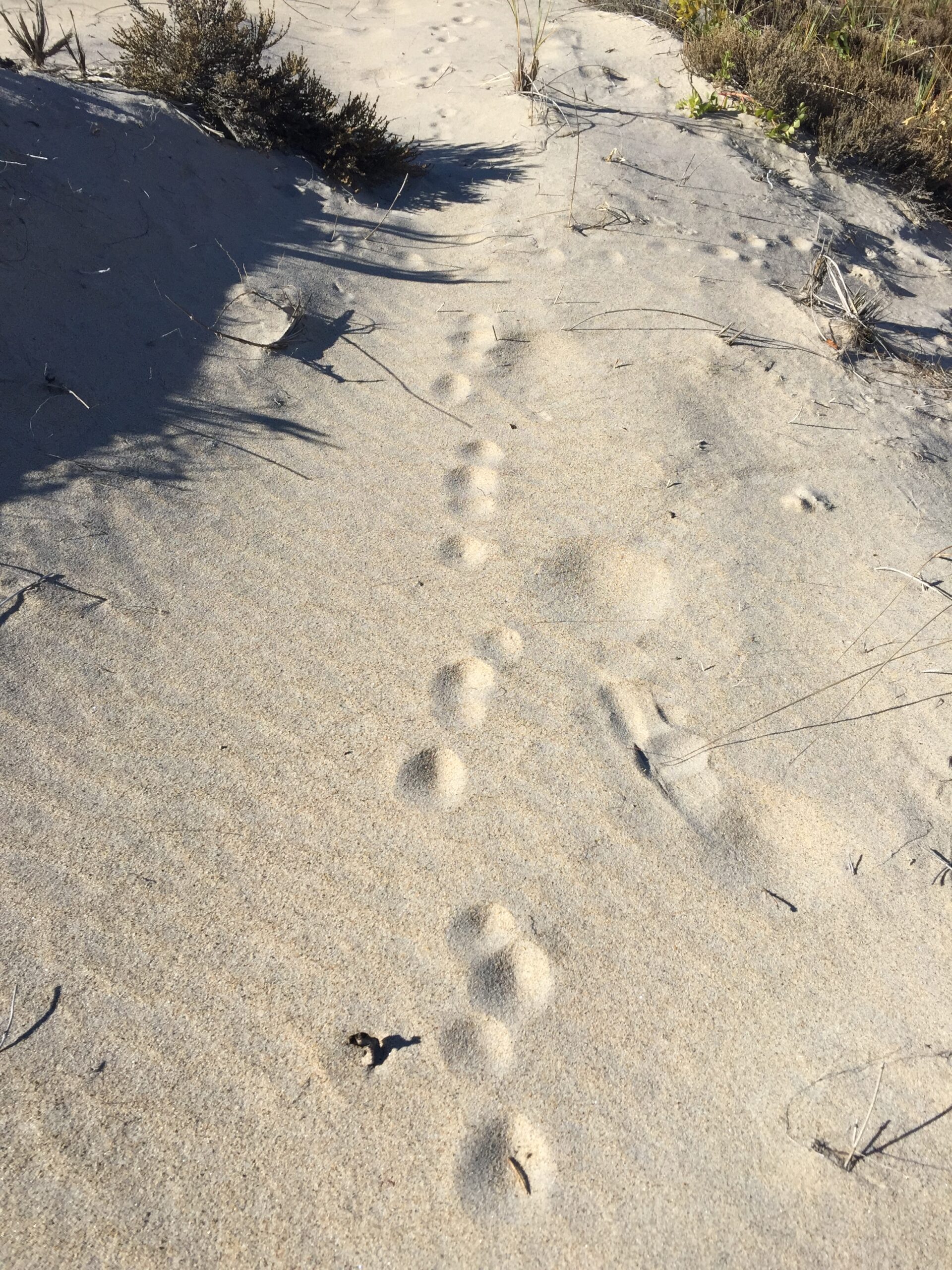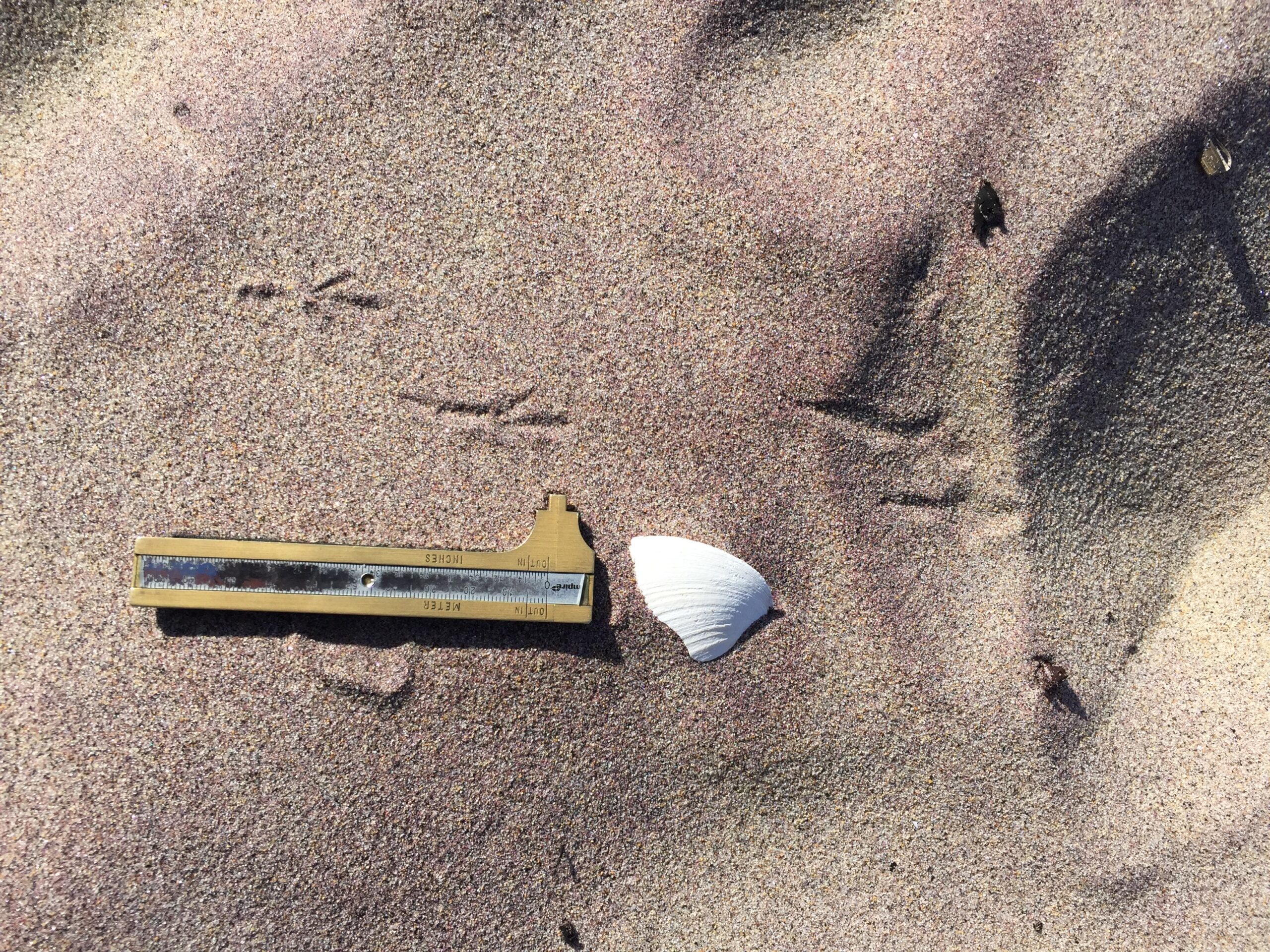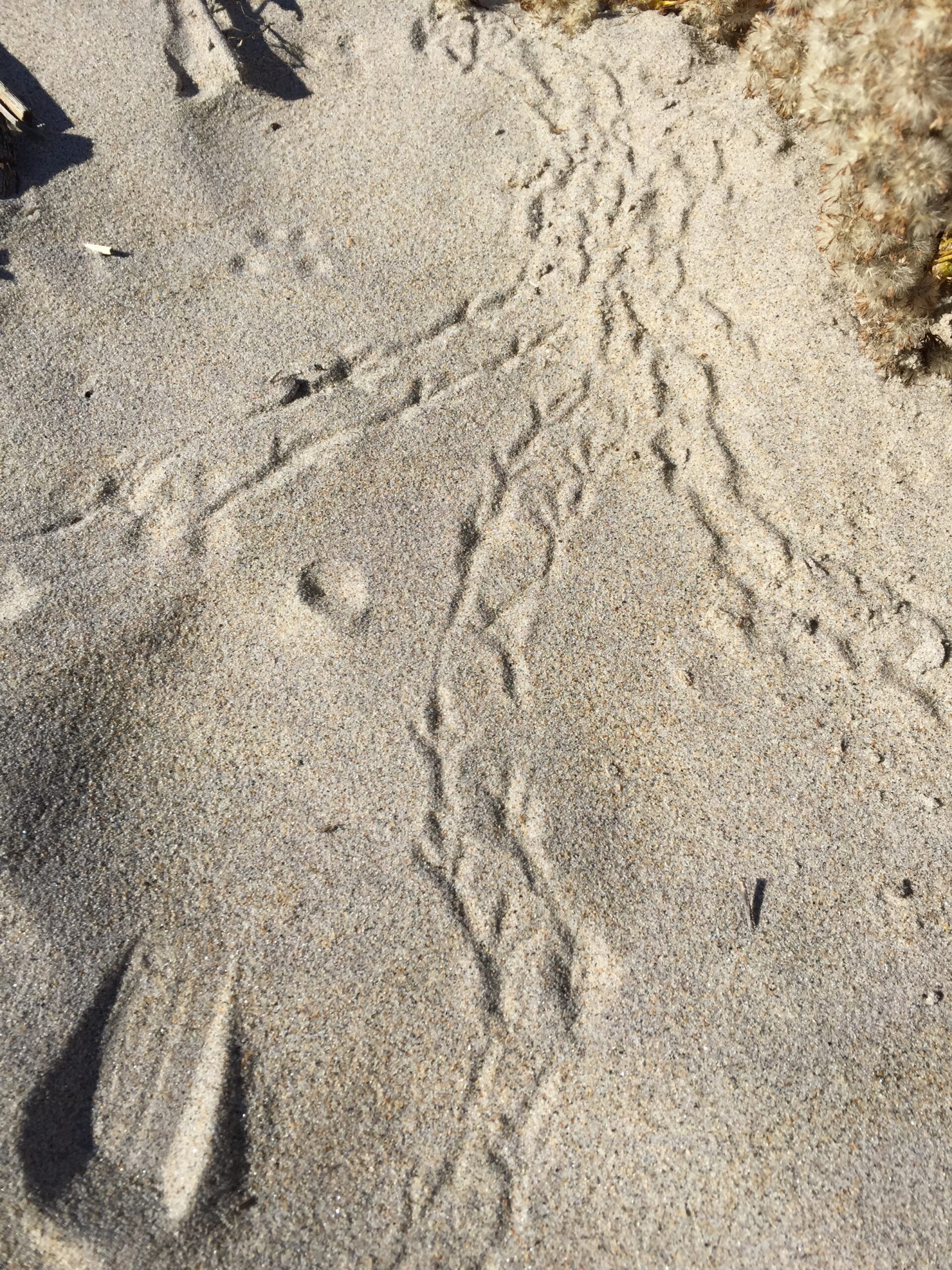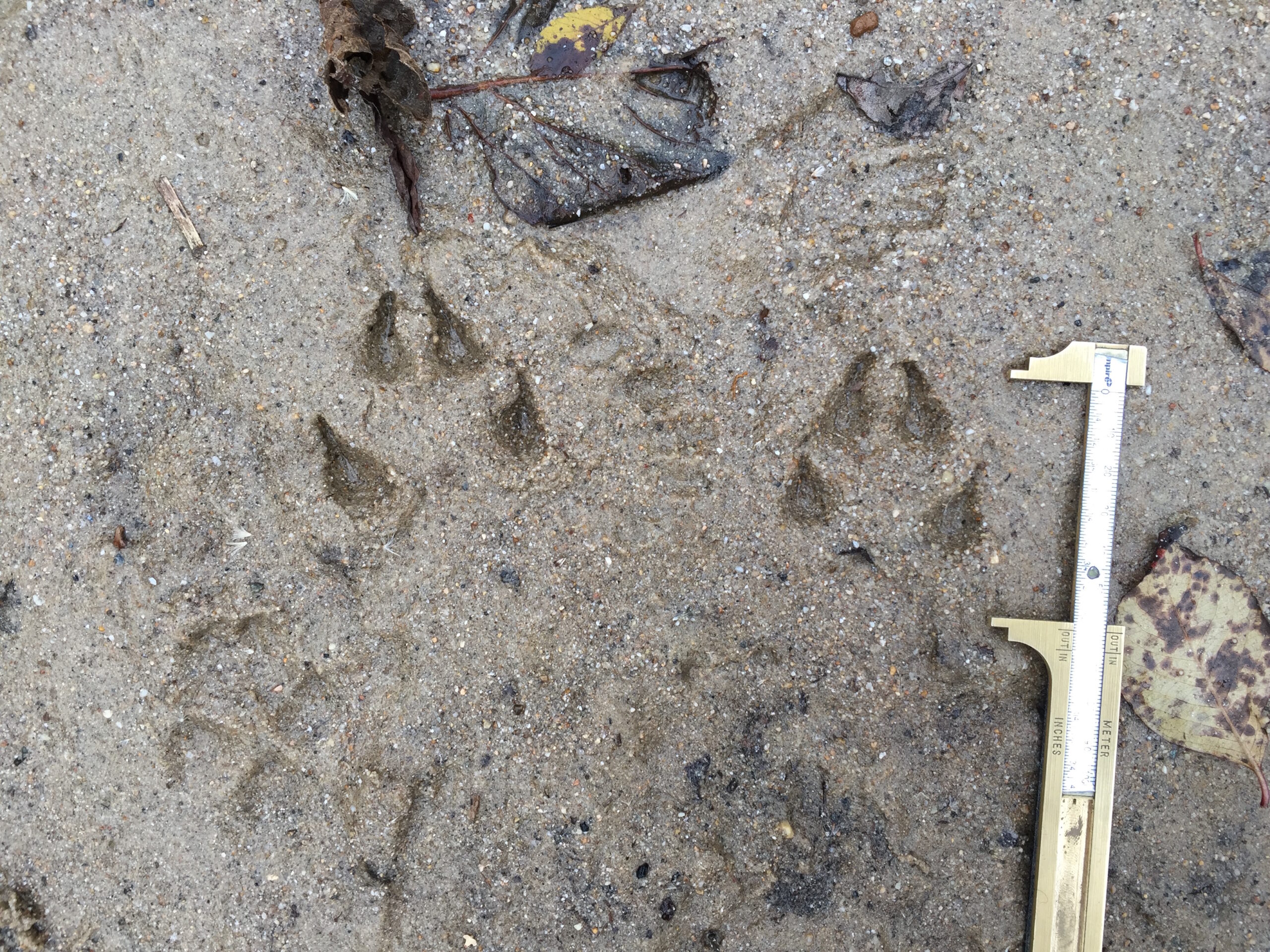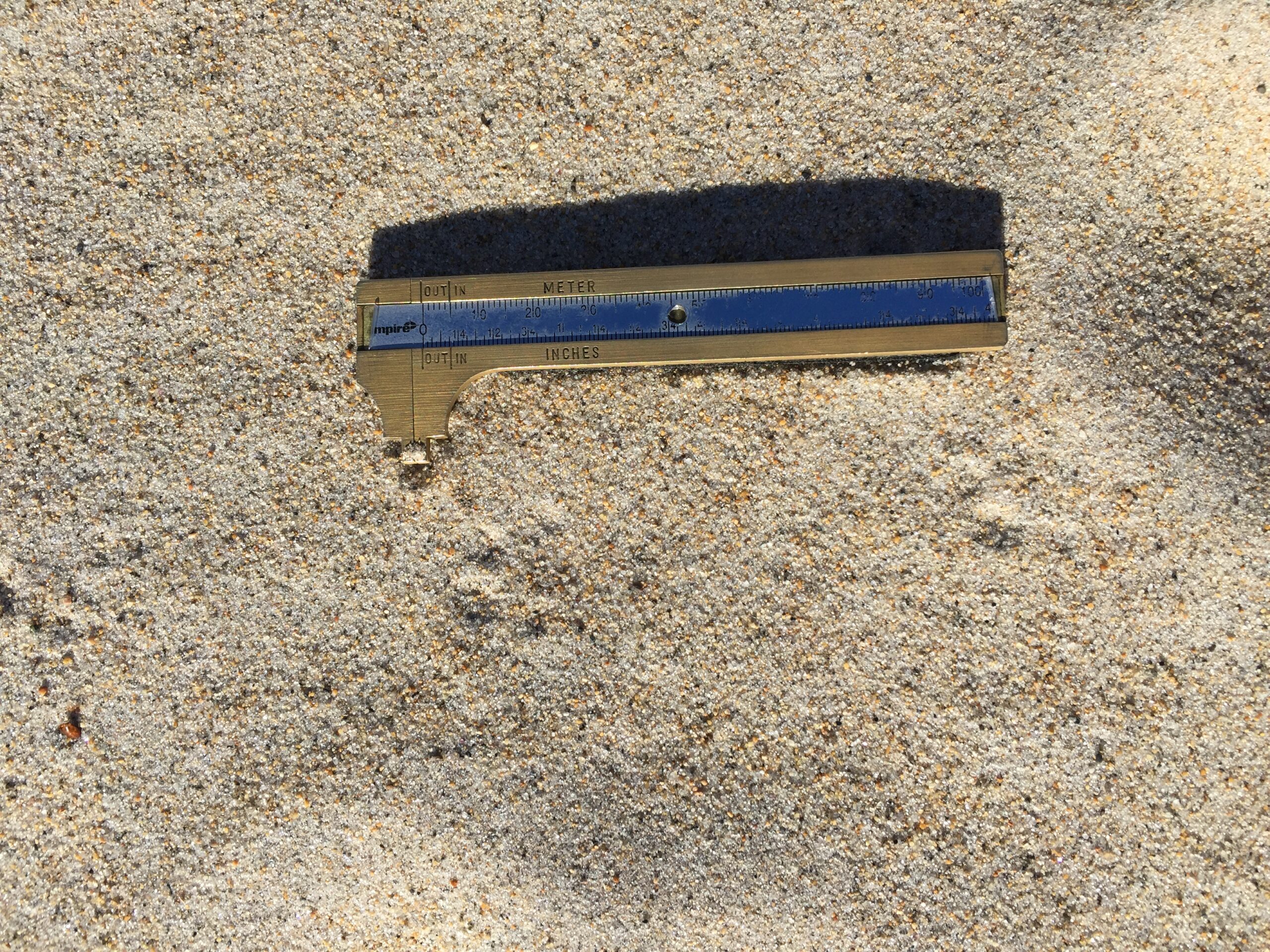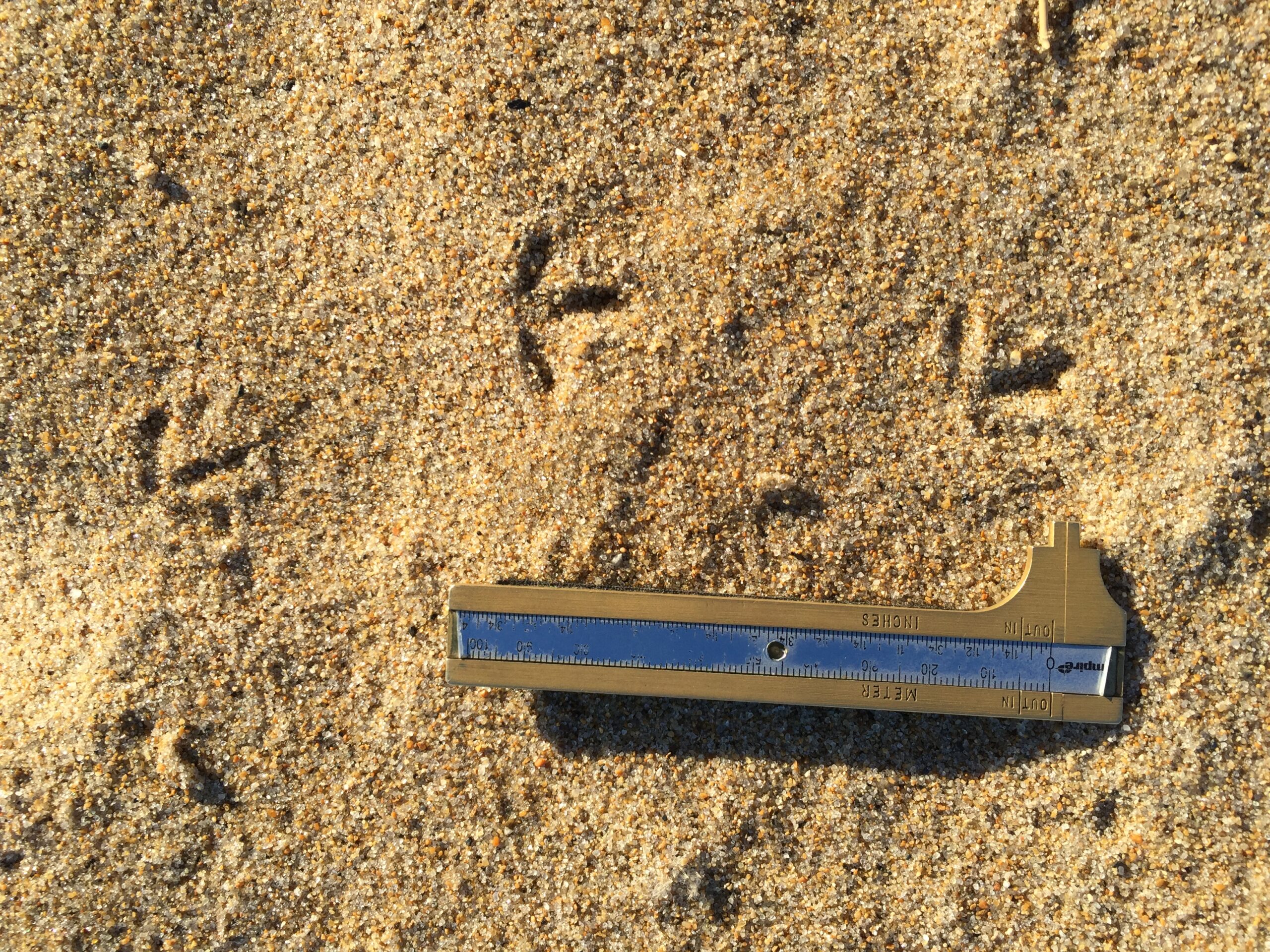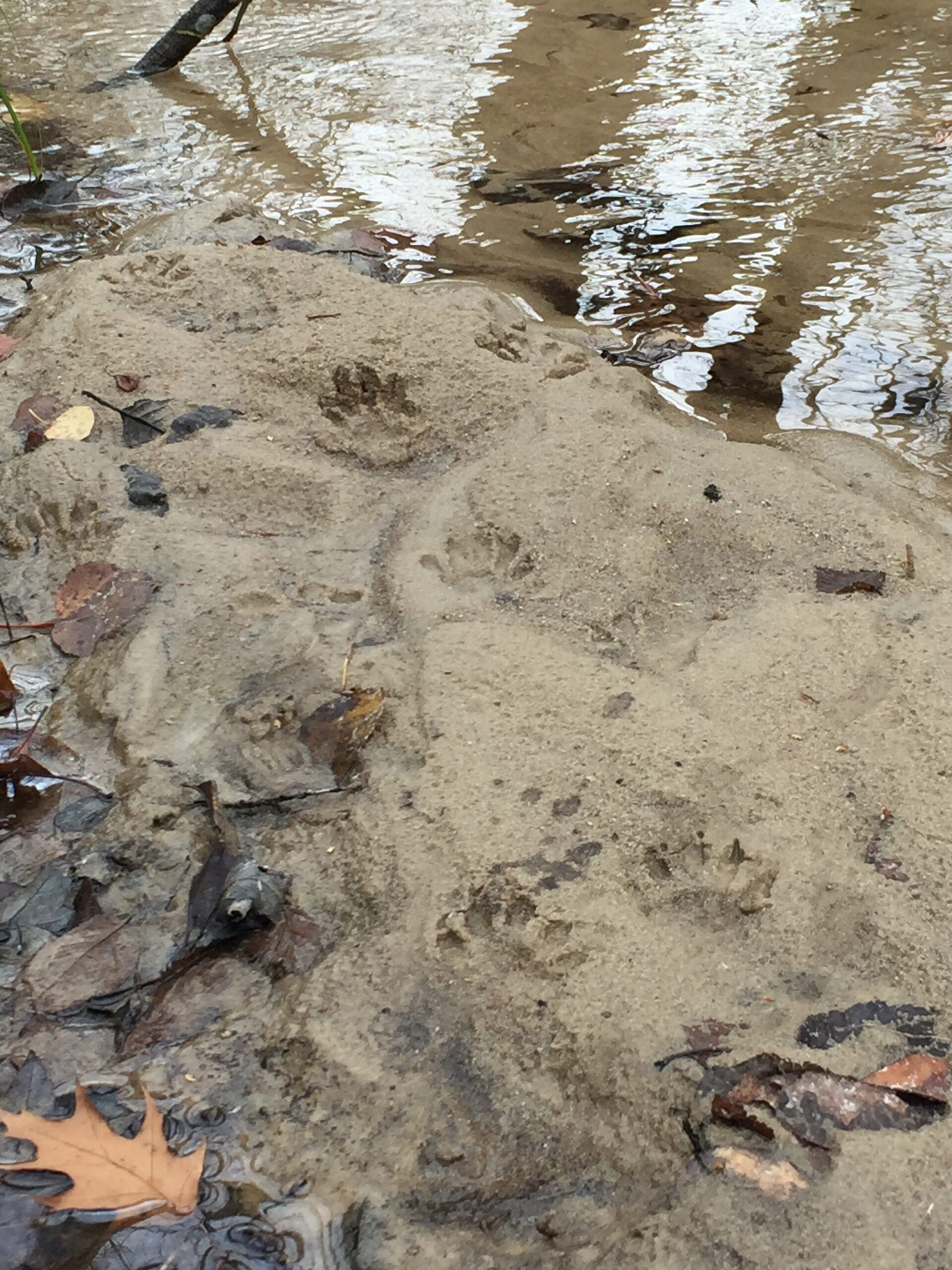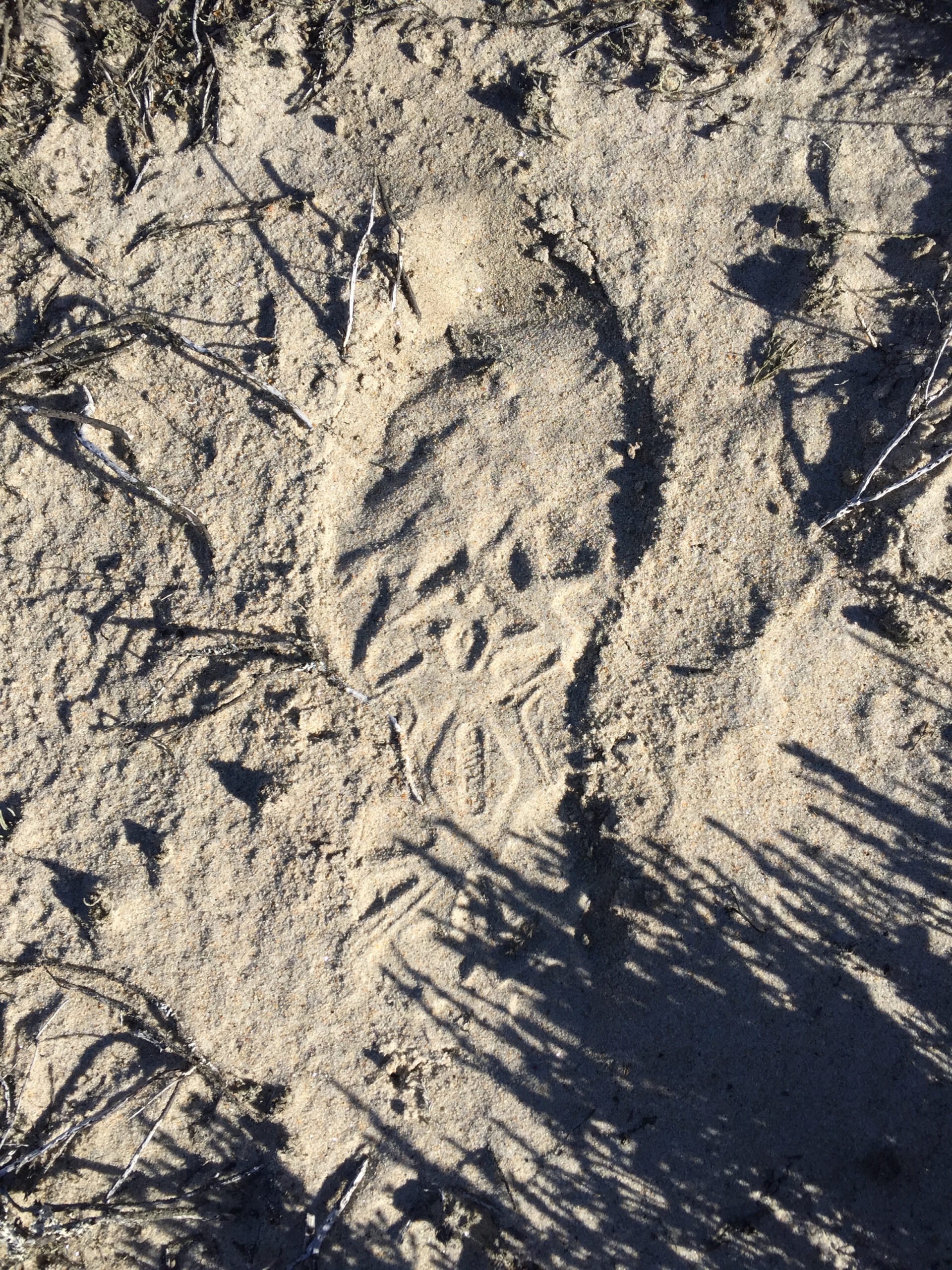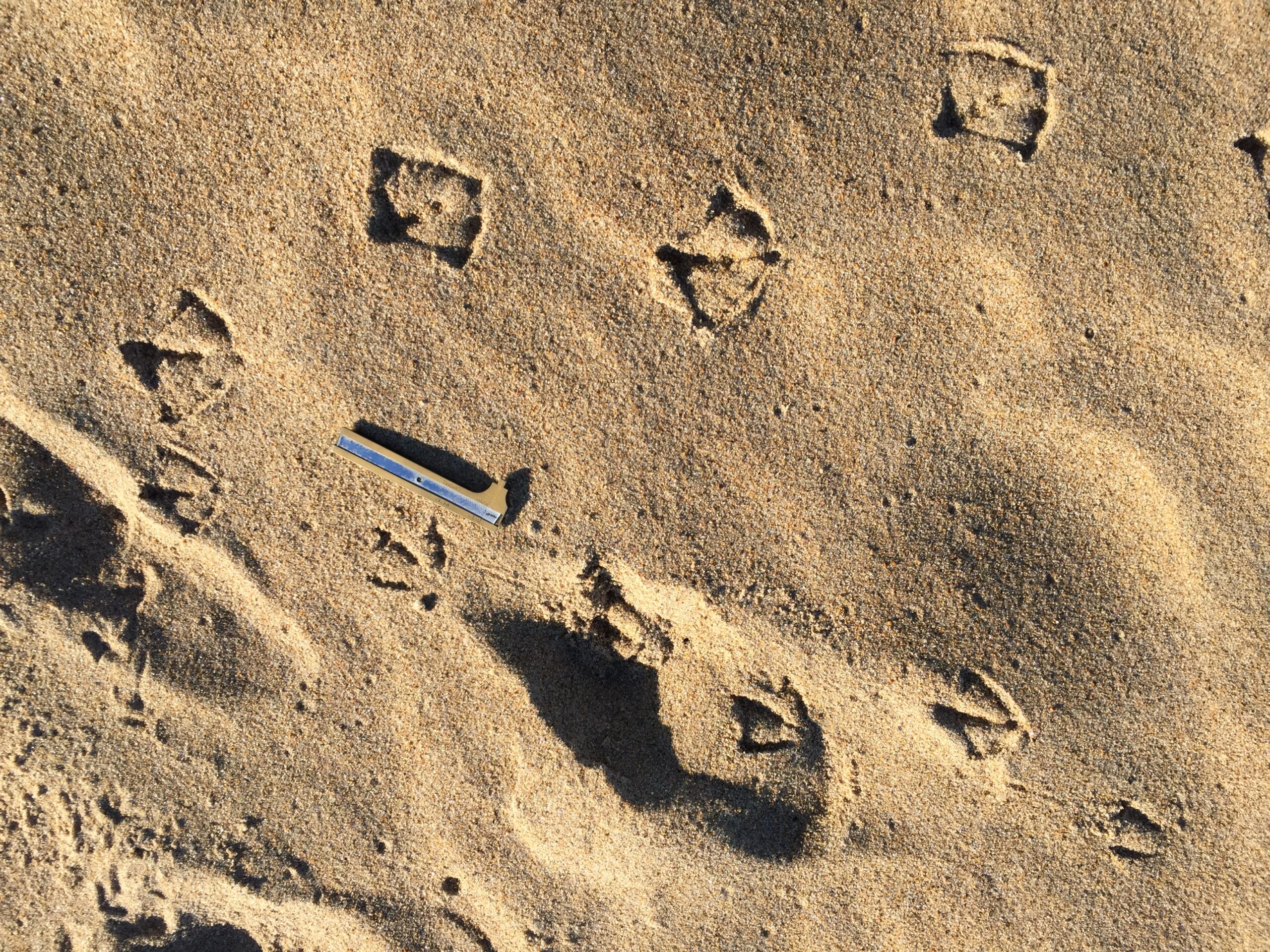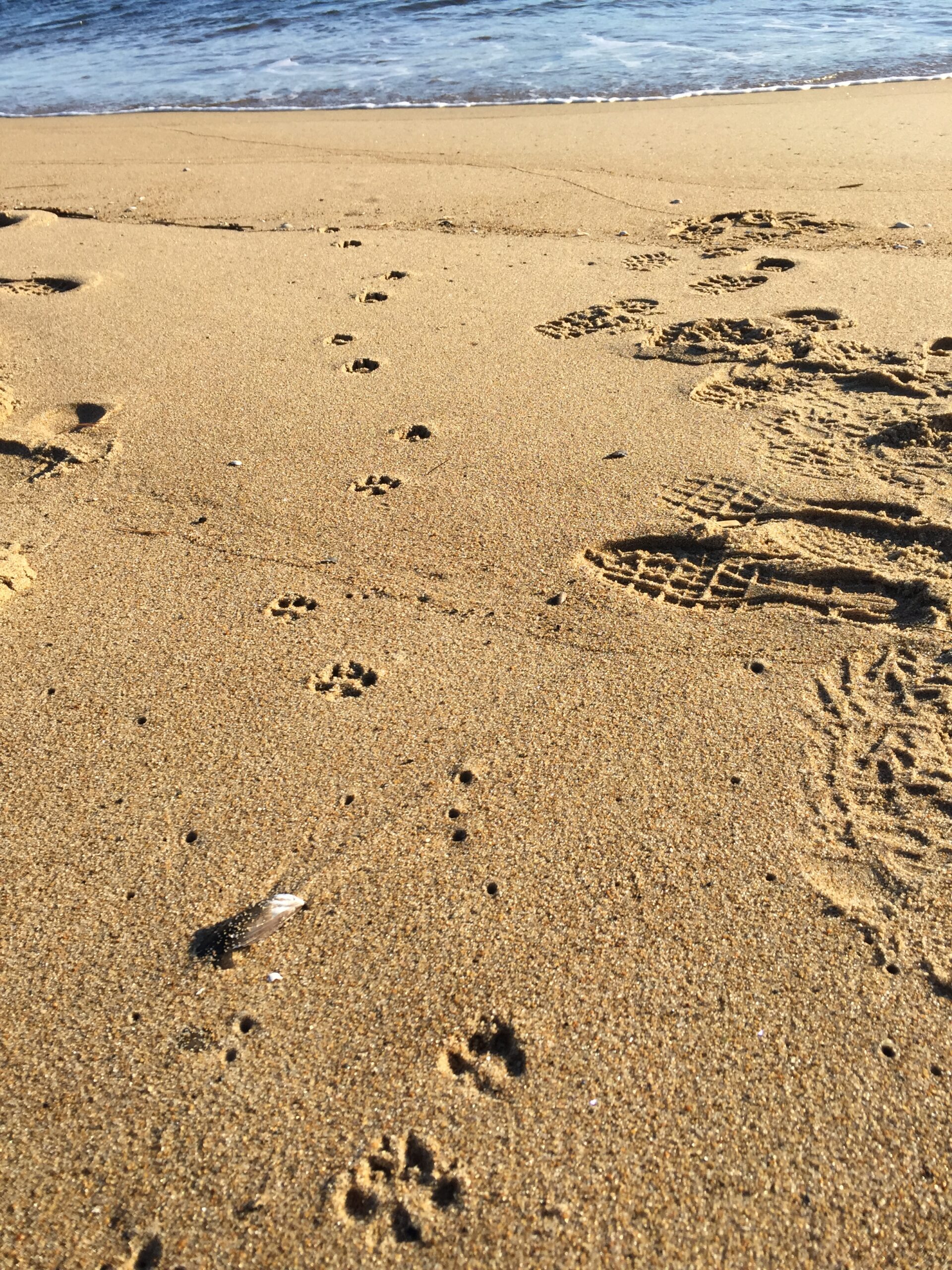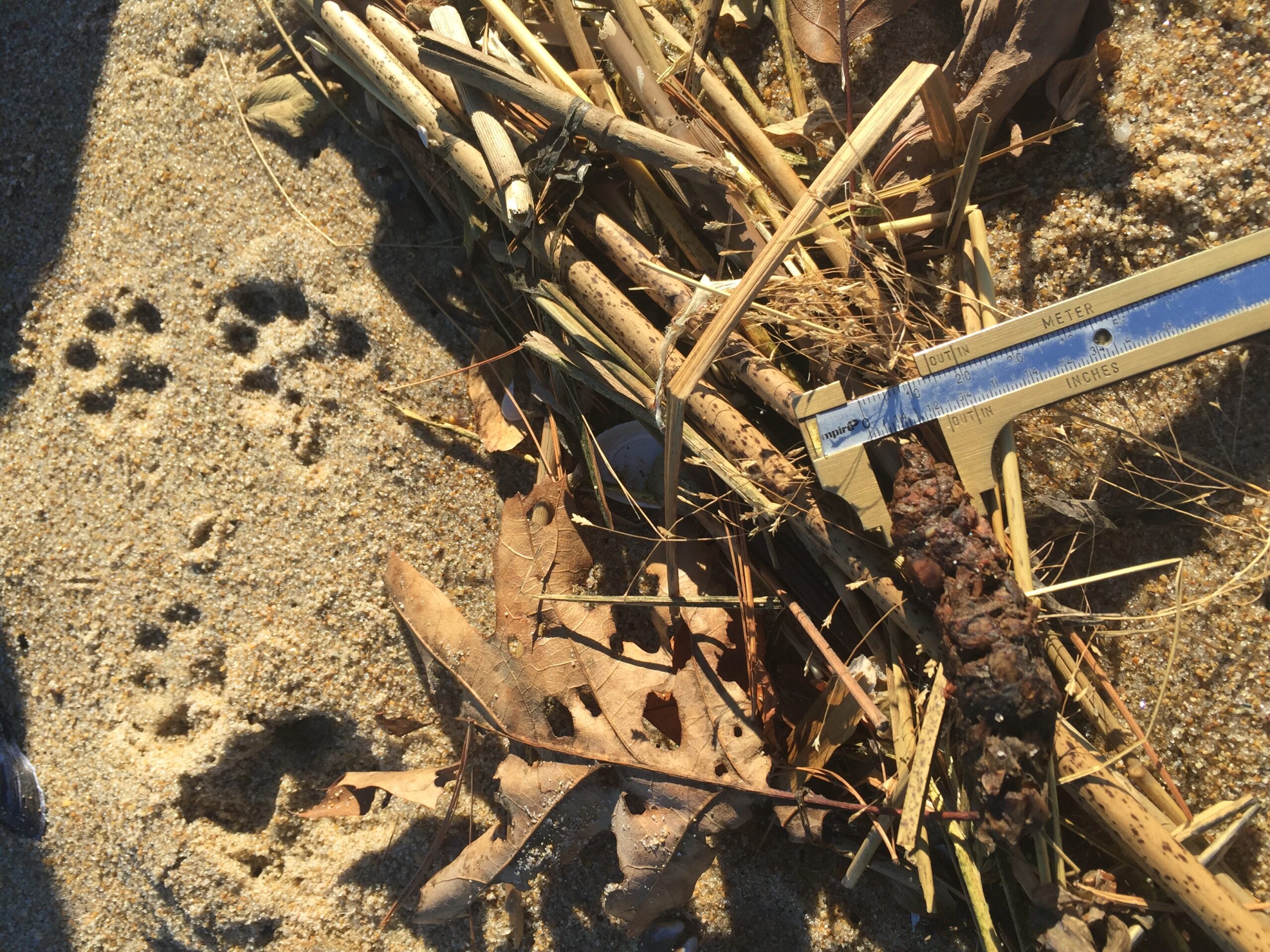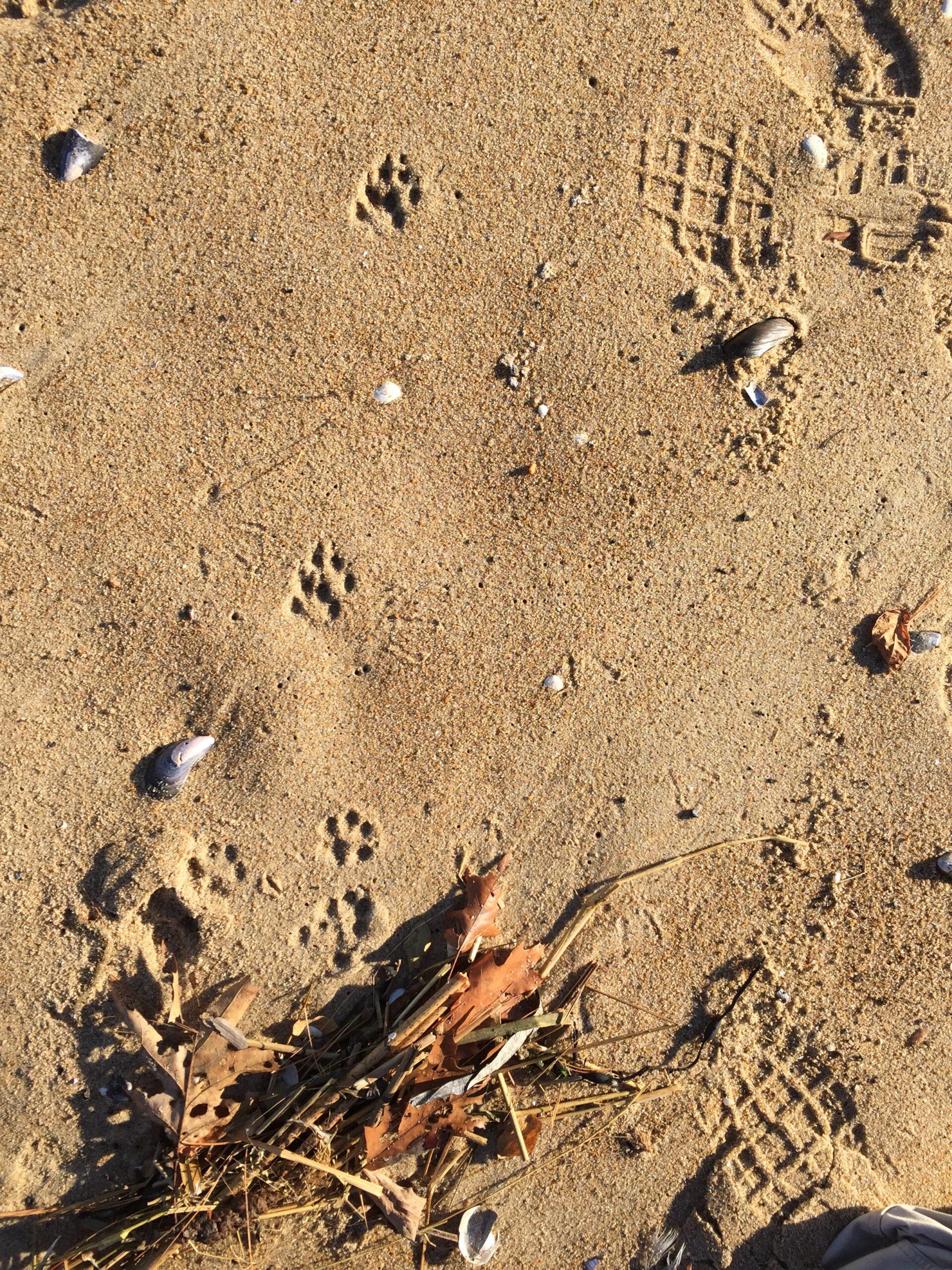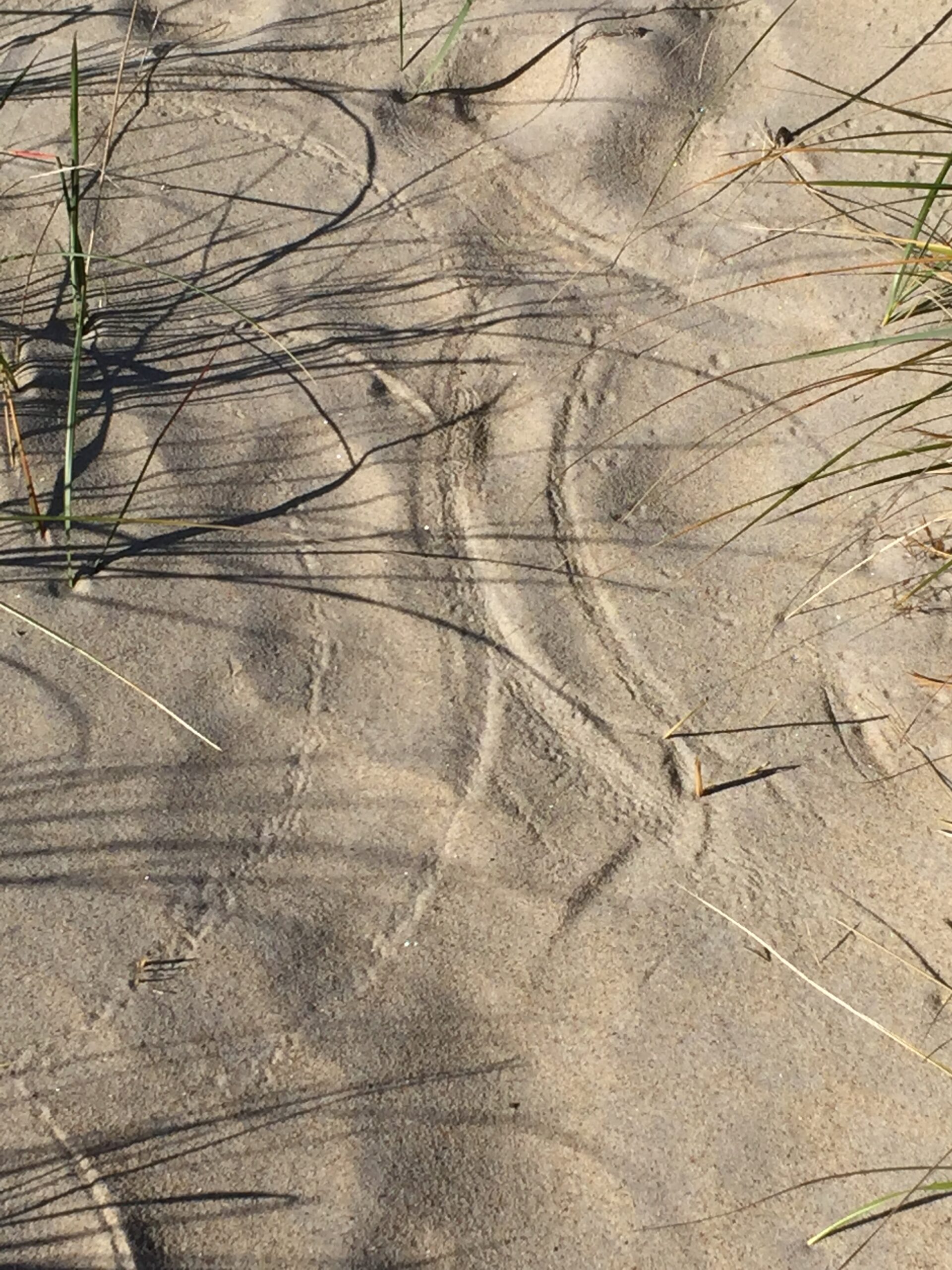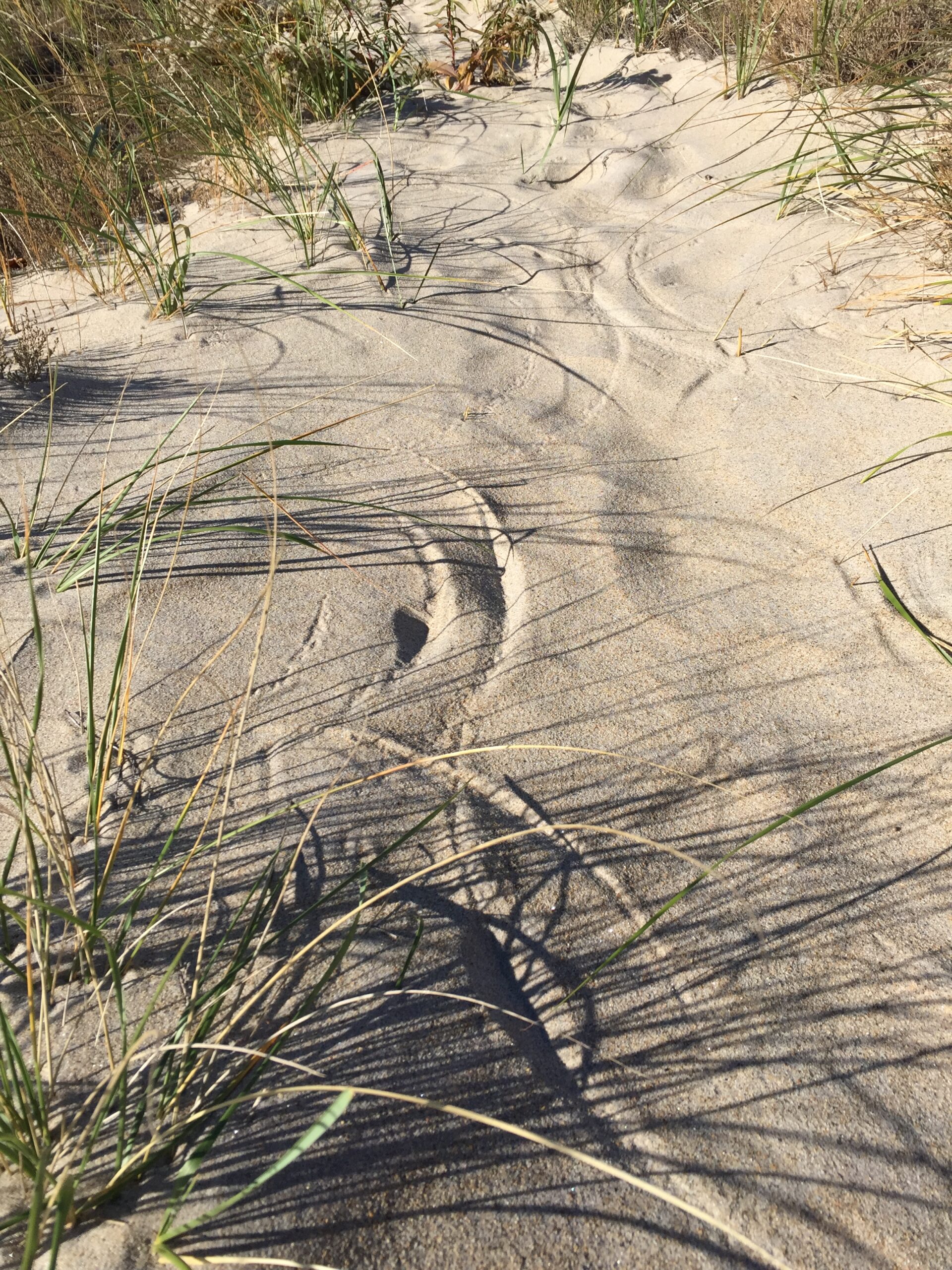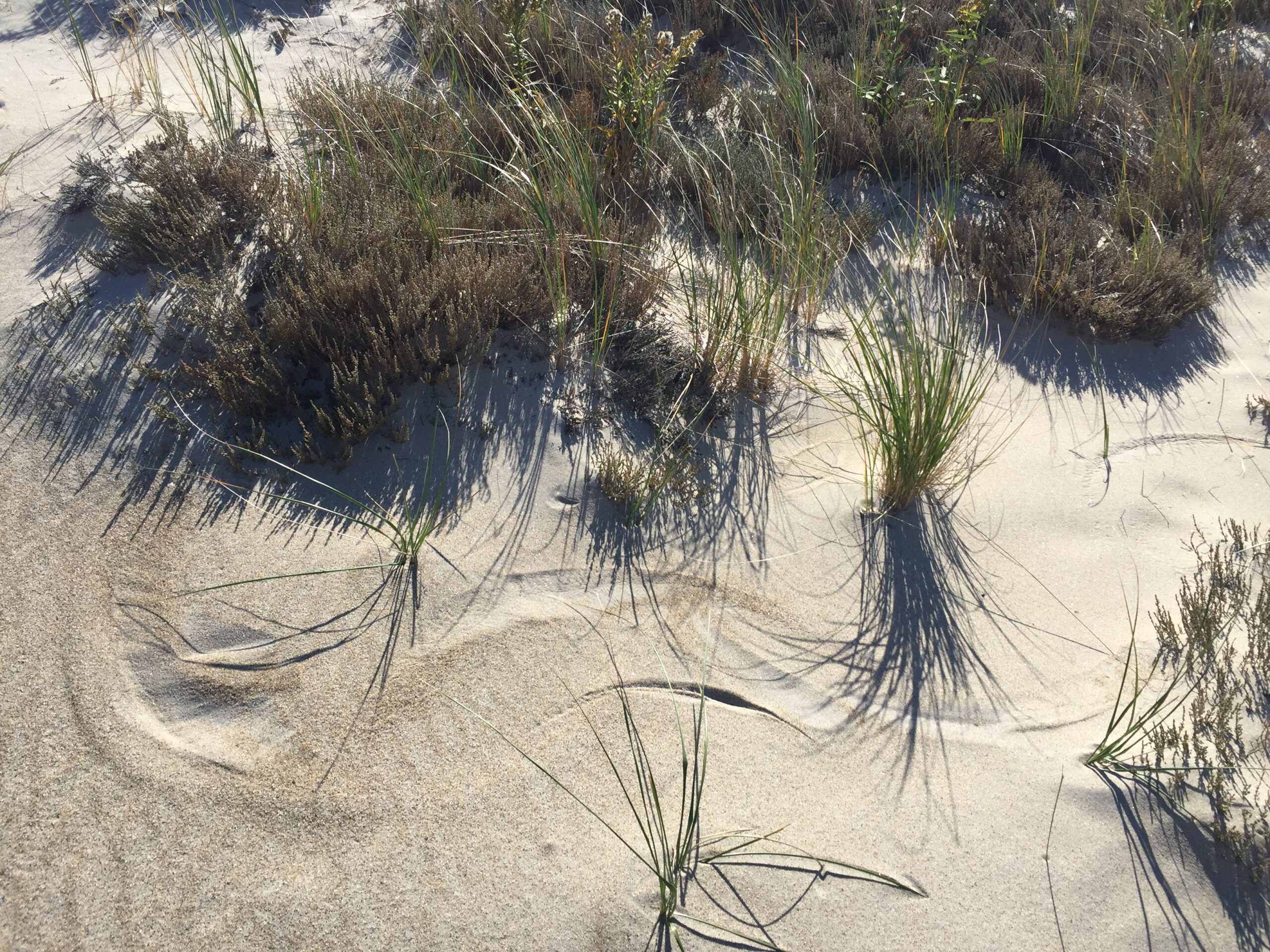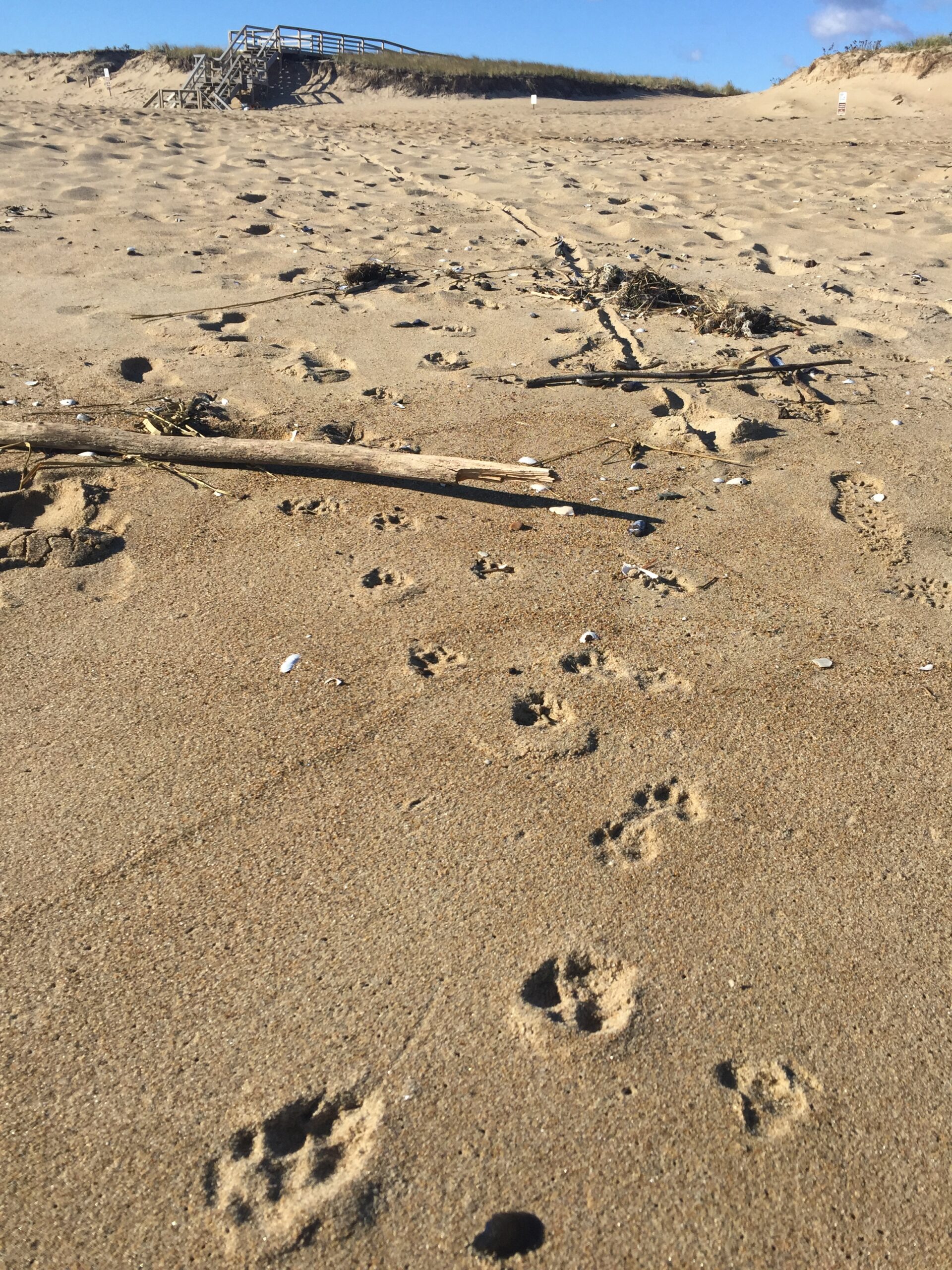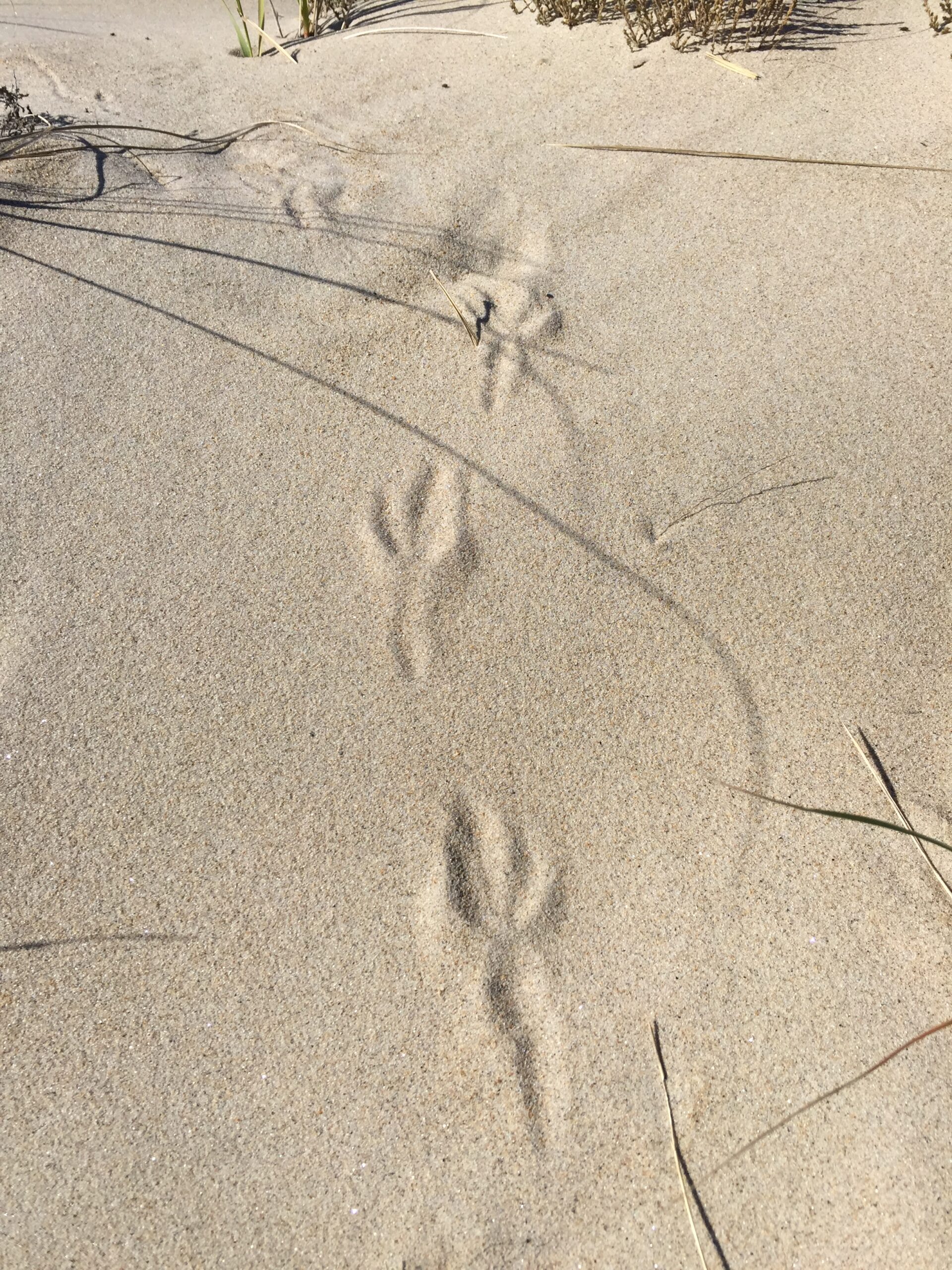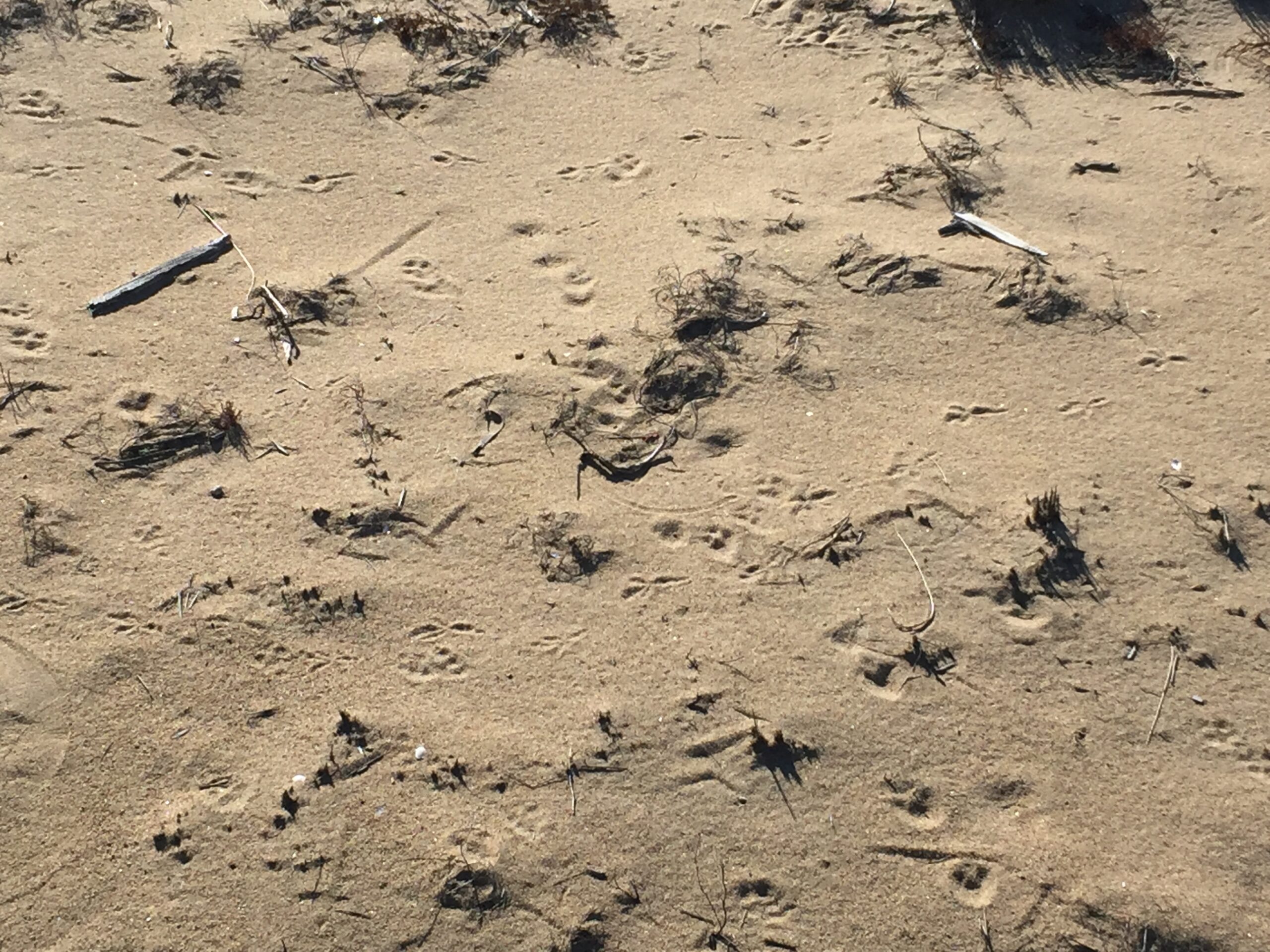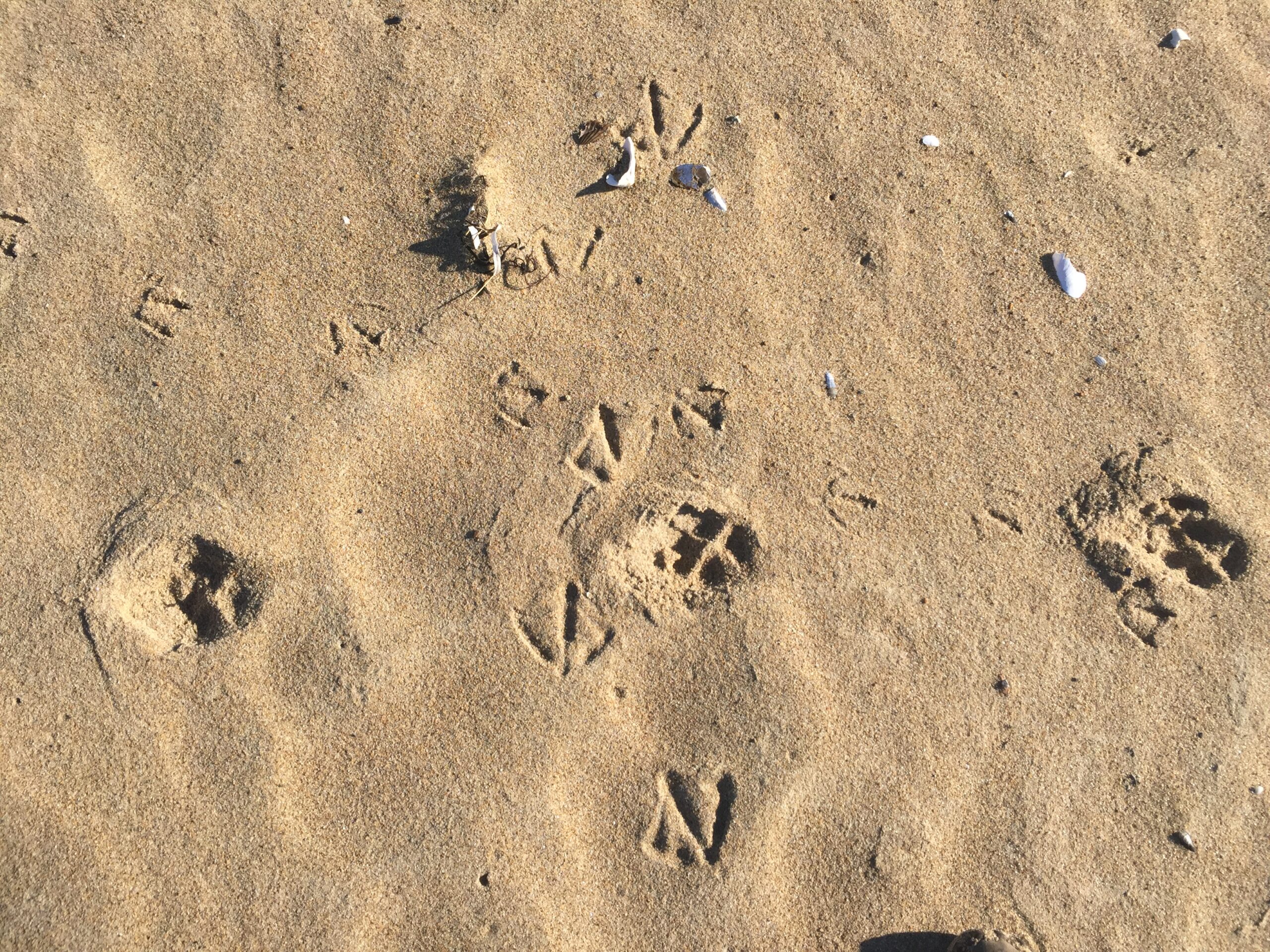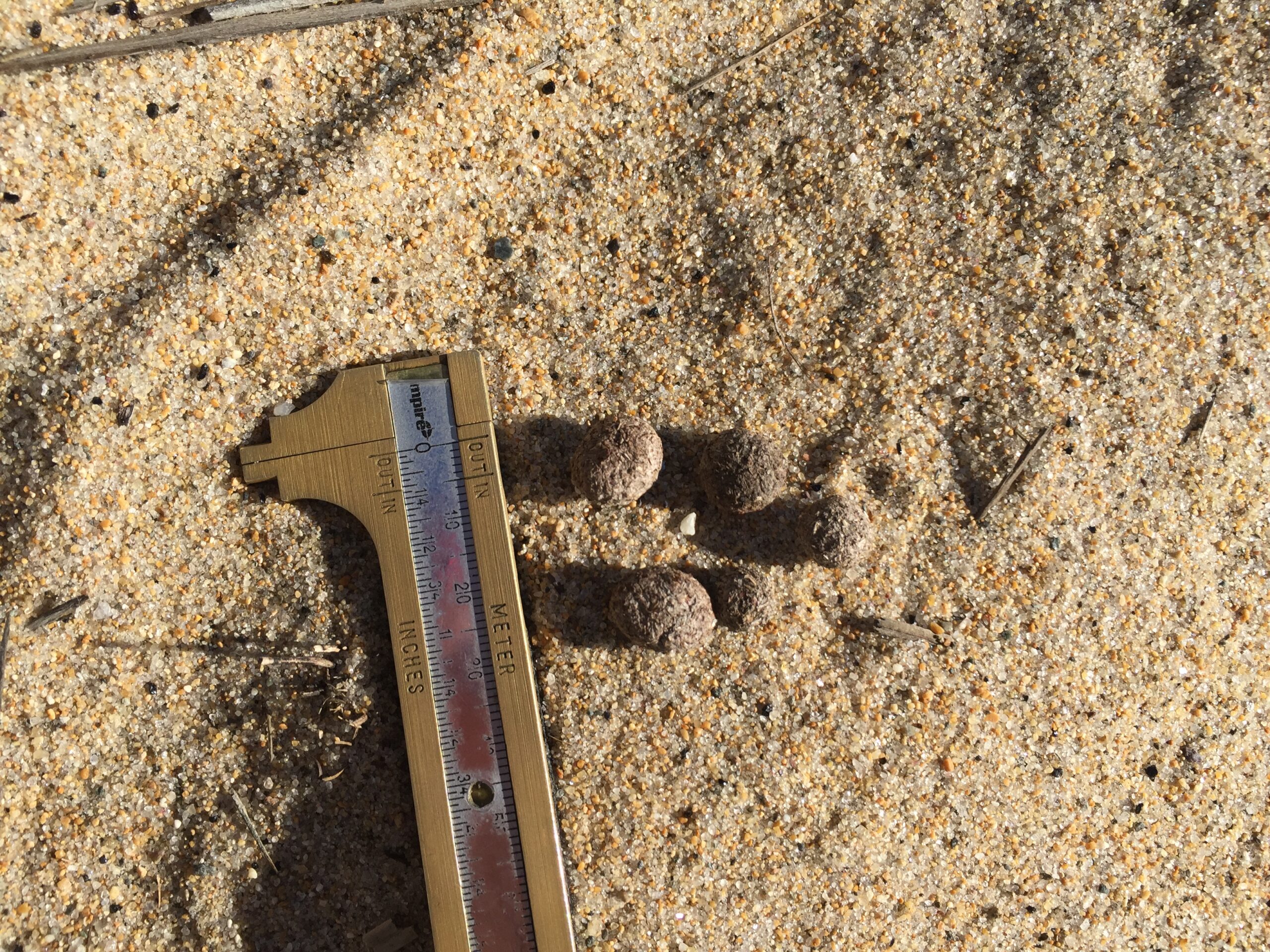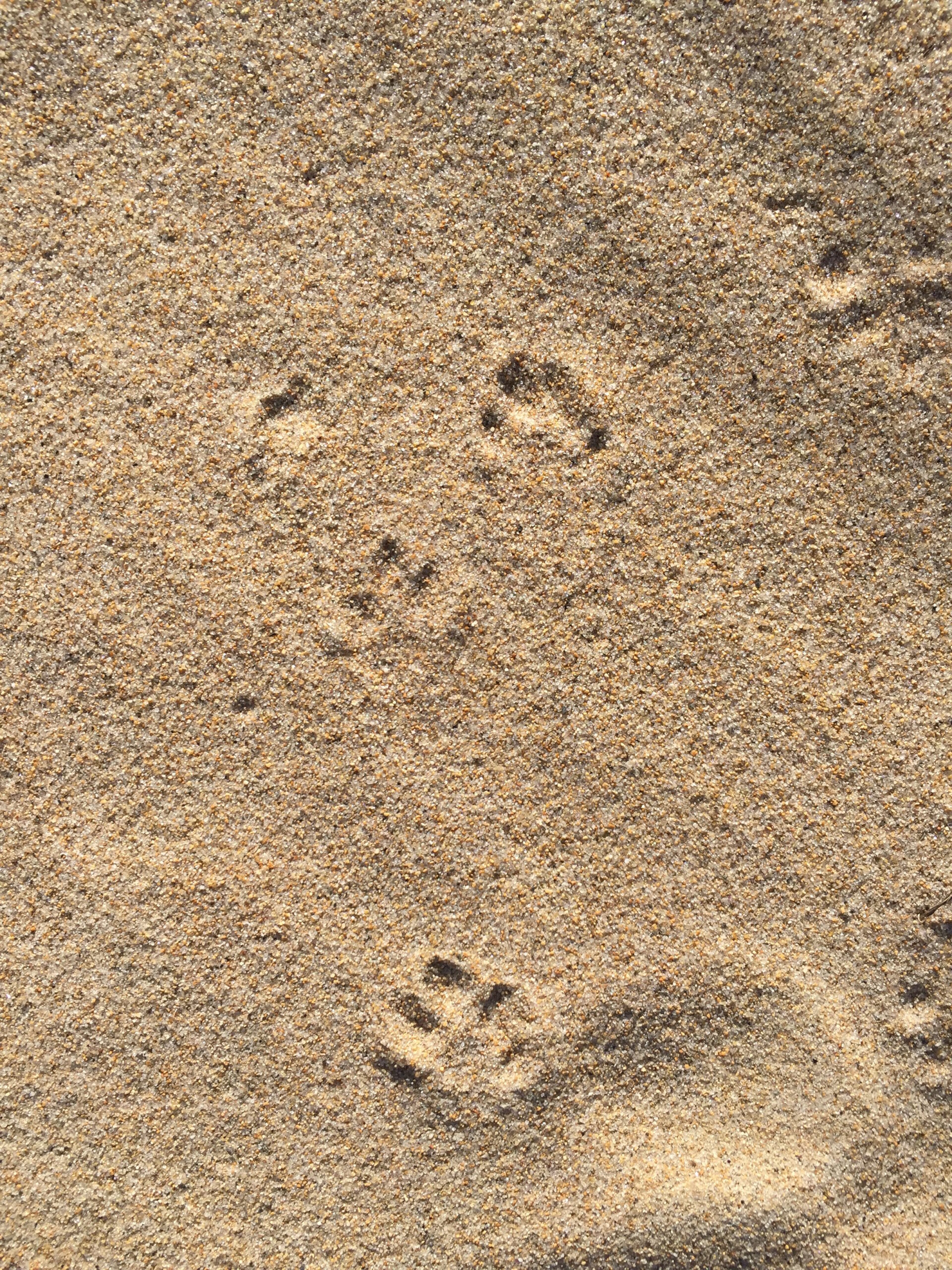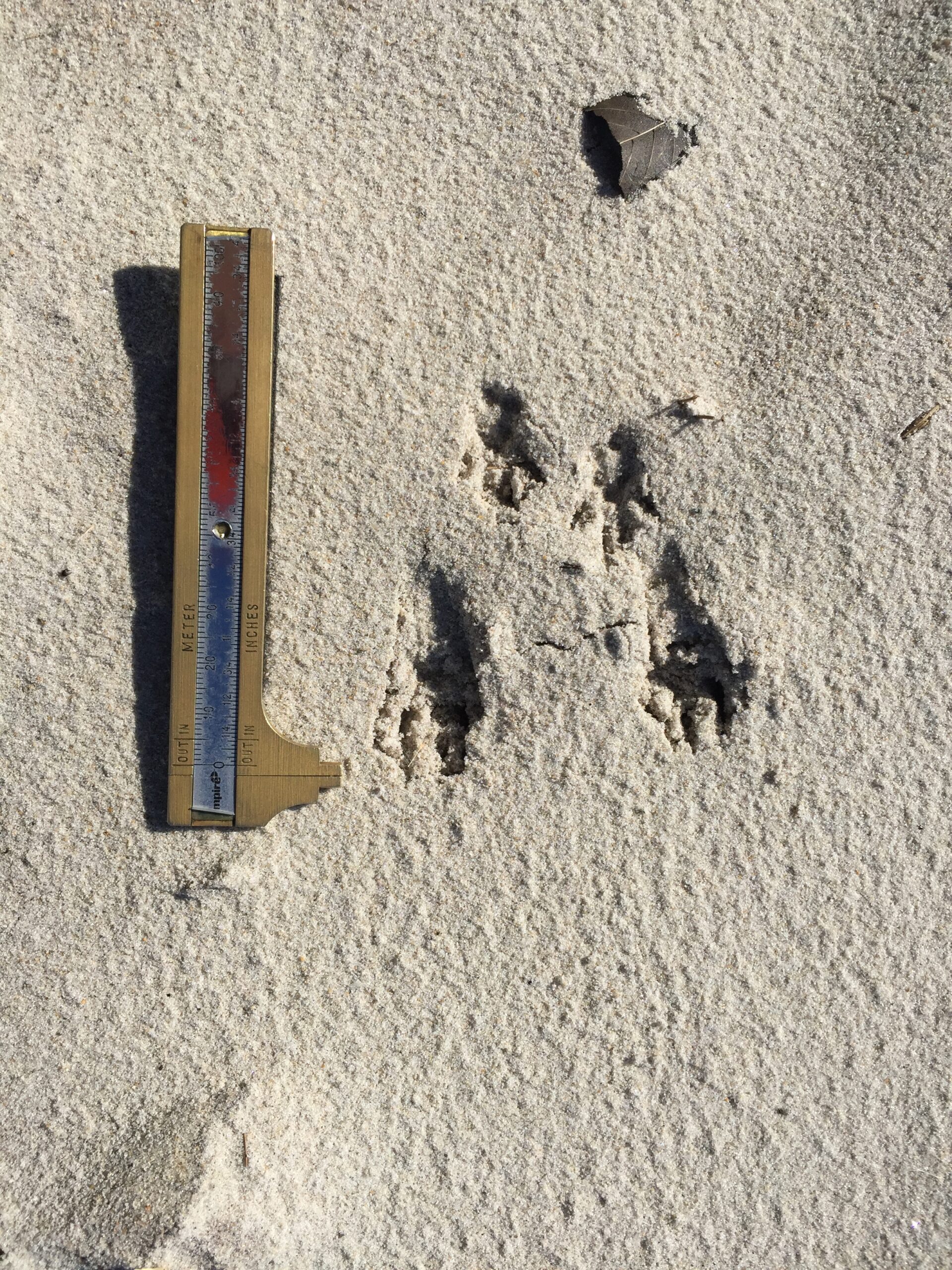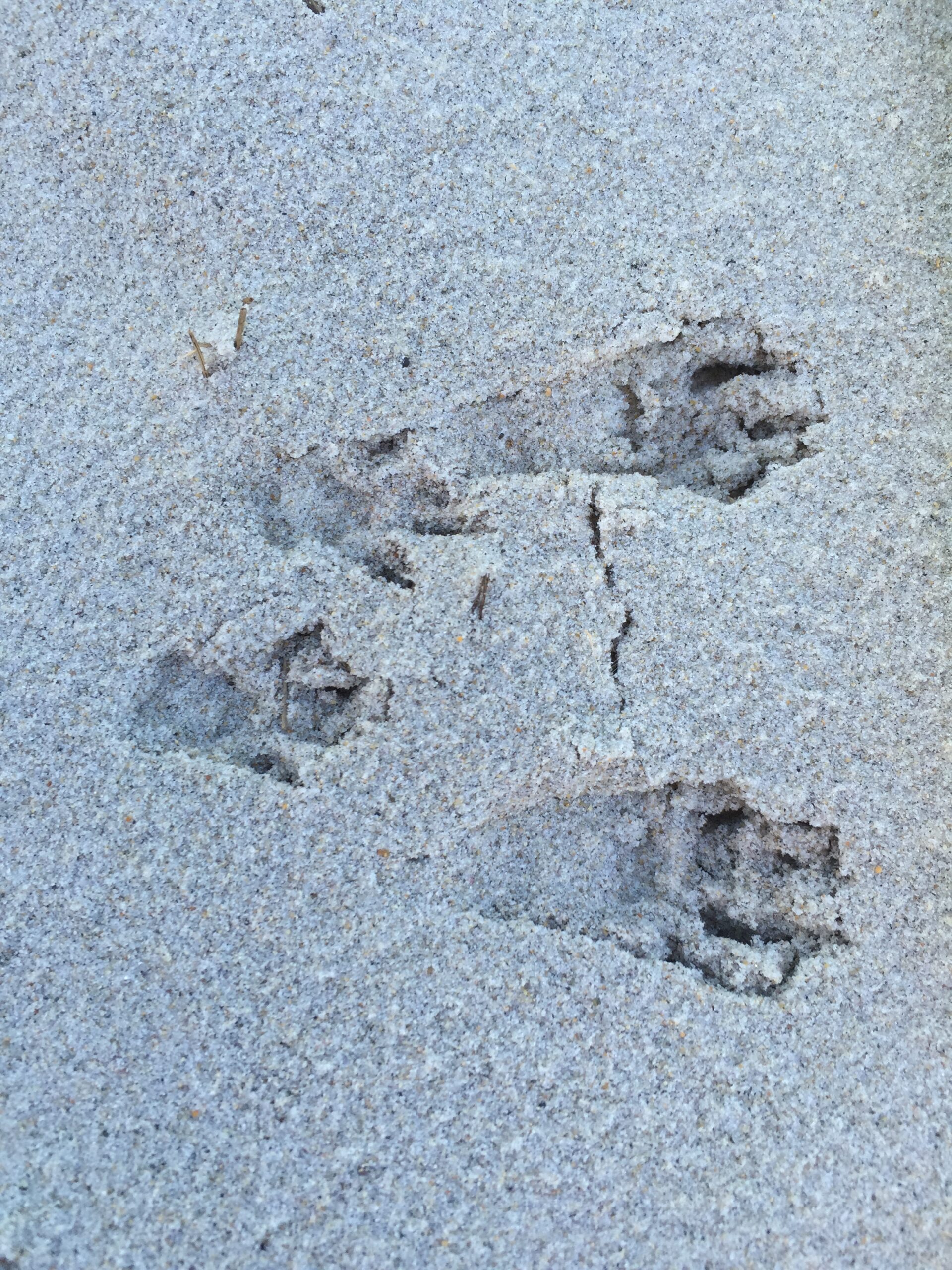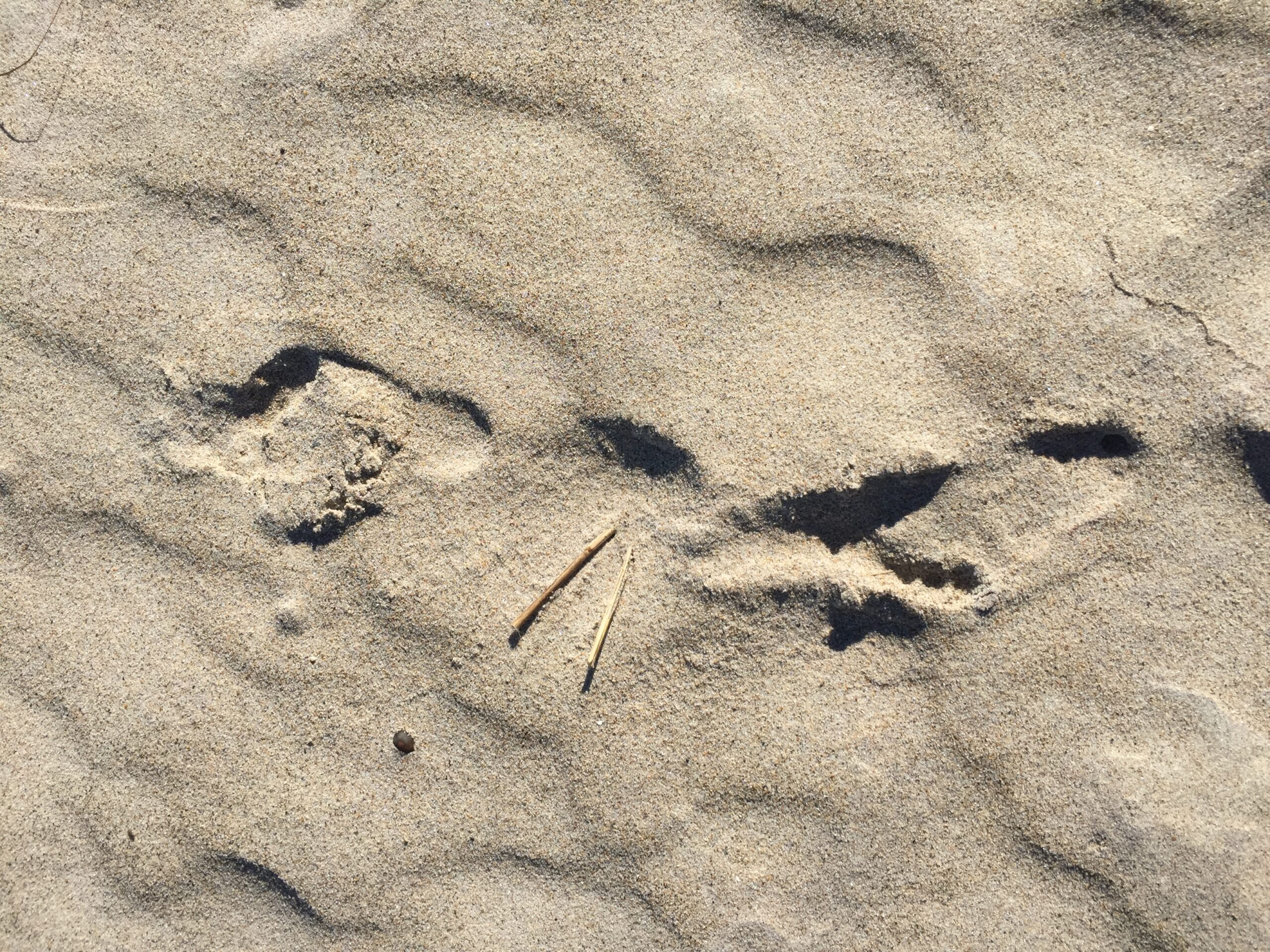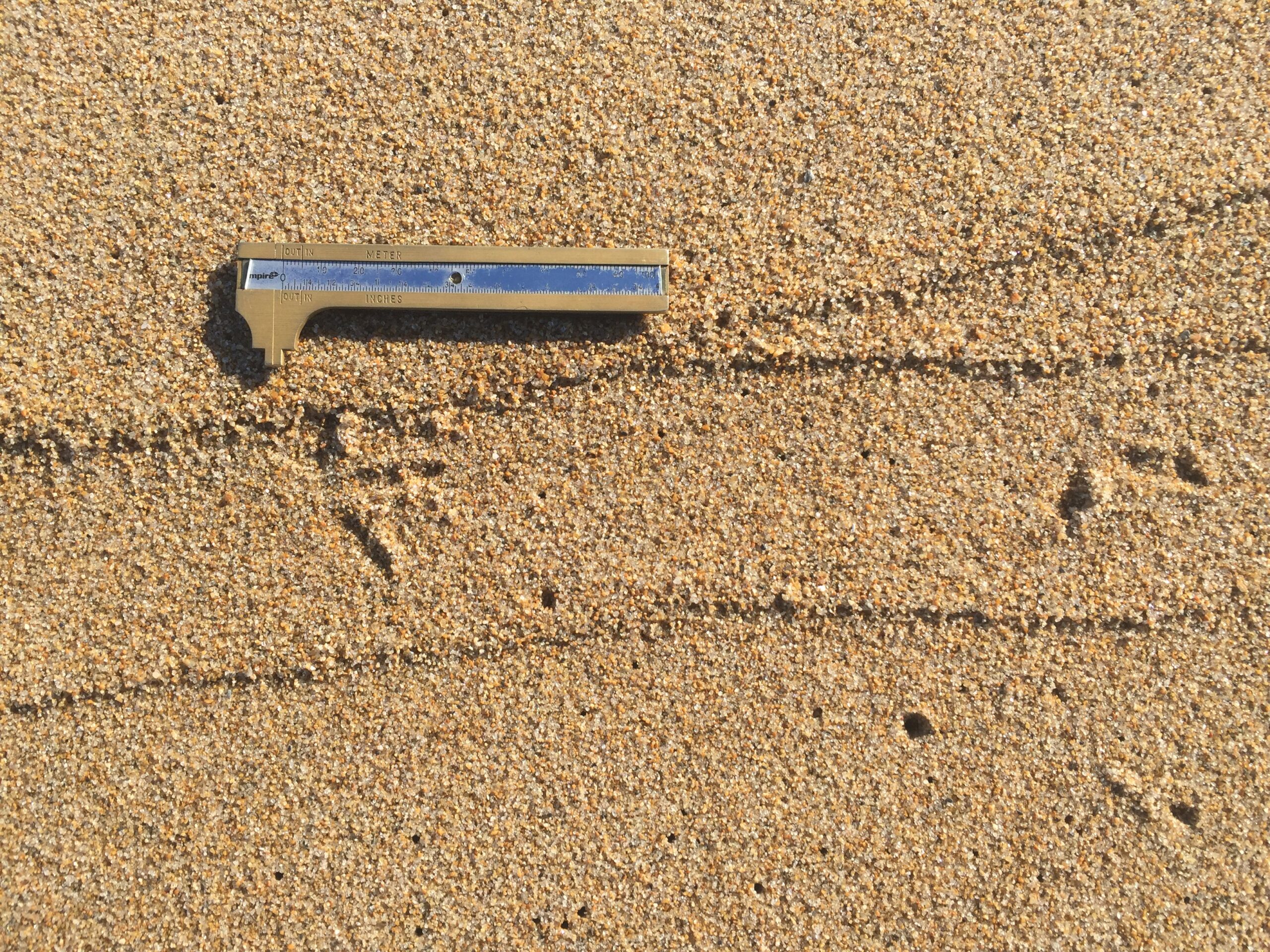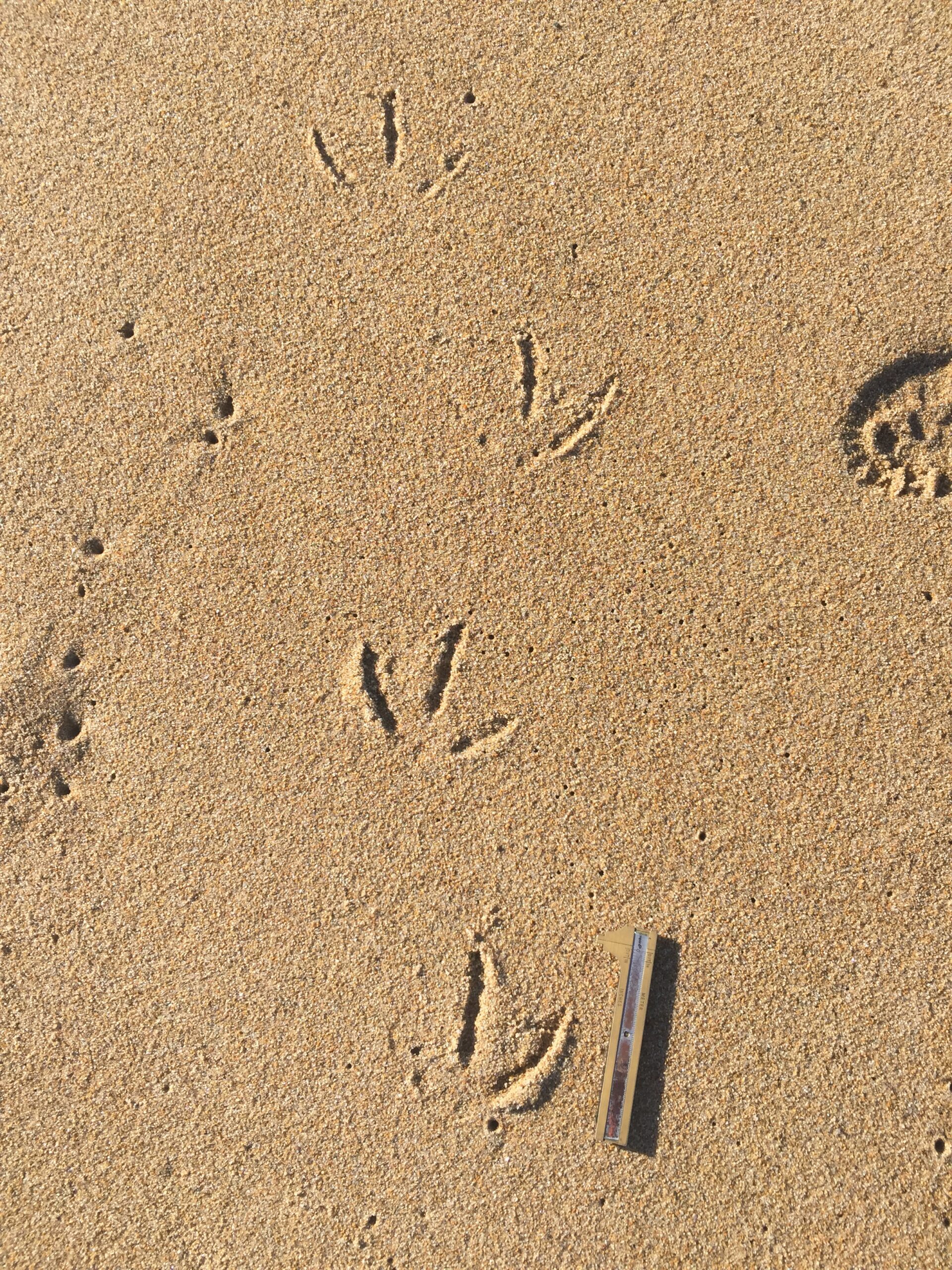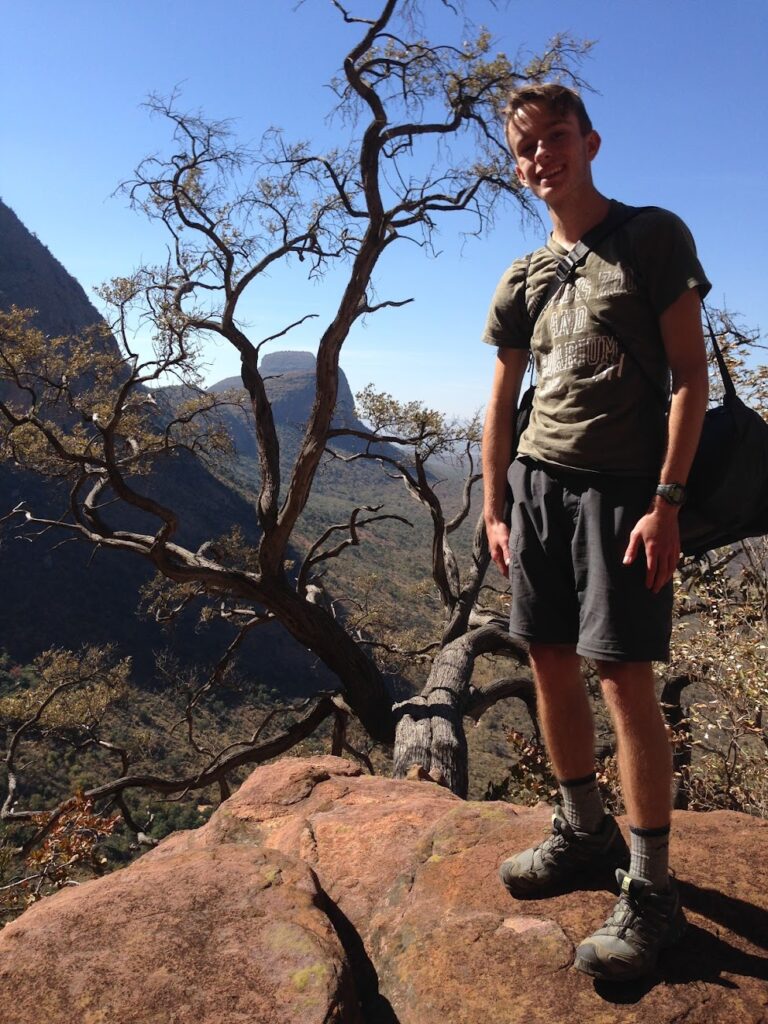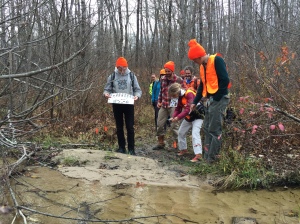
I was recently invited to spend another blissful weekend feeding my tracking addition with like-minded folks at White Pine Programs in southern Maine. As an alumnus of their first ever Tracking Apprenticeship in 2007-2008, and a former Teaching Assistant for the program, I’ve been invited back for a few years now to help teach the new apprentices during the November Trailing weekend – and I LOVE it: seeing Piney people again, meeting the new trackers, reading and following tracks… the whole experience. I always tell them they can’t keep me away, but I’m always relieved when they ask me back the following year. (Shhh… don’t tell them.)
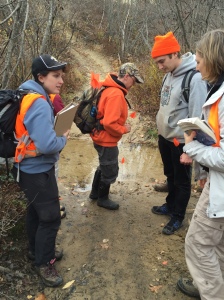
We don’t focus exclusively on trailing, doing some track and sign identification and interpretation on both mornings (more intensively on the first morning); Saturday is spent in a Pine Barrens and a wildlife sanctuary in ME, and Sunday at Plum Island in MA. Track and sign mornings are followed by afternoons of trailing each other and whatever animals that have moved through the landscape. There is also time during the overnight on Saturday for journalling, stories and a pot luck dinner!

I will post a slew of track and sign pics at the end of this blog, but right now I want to focus on the trailing. On Saturday, we practiced trailing on some seven-hours old trails that one of the White Pine instructors, Dan, had laid down earlier that morning. The trails were in deep and wind-blown leaf debris in the forest, and the wind had been howling all day, throwing the leaves over each footprint and drying out the scuffed mosses and broken branches – obscuring much of the evidence and making what should have been a progressive exercise from easy to more challenging into a very difficult experience. The apprentices split into teams of two and tried to follow Dan’s trail, but quickly veered off, and some had to lay new trails because there was just nothing left to follow. They had more success with that, and moved further into the forest to take turns laying trails and following for each other. Soon they were asking each other to leave less obvious sign, and challenging themselves in their newfound skill.
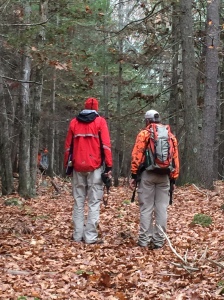
I always find it amazing to work with people in these types of exercises. They pick up on the mechanics pretty quickly, and start to build “file-cards” in the “filing cabinet” of their minds that tell them when they are looking at a track, and when they are not. They learn to look for “track-plates”, areas that should hold a track if an animal walked through it, and to go there when in difficult substrate. They learn to look for the most obvious route and remember where their last track was in case they need to go back to it.
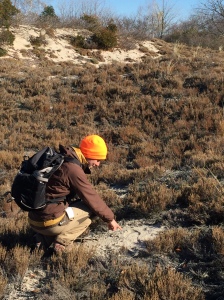
But tracks look different in oak leaves than they do in hemlock, or beech leaves, or moss, so the learning is constant (that’s one of the exciting parts for me). Then they have to remember to look up, because sometimes a faint line of “lift” where leaves have been disturbed is more visible than the actual tracks, and lifting the eyes also helps to keep the tracker aware of his or her surroundings (and if we are trailing animals it hopefully allows us to notice them before they notice us, and get close to observe them).
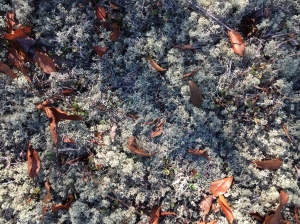
Trailing also tell us something about ourselves: how do we follow a trail, is it stop-start, too quickly, slowly and methodically? What do we do when we make a mistake or lose the trail: stop and give up, look in the most obvious place while directing our teammate to look somewhere else (communicate and delegate), ask the instructor for help, wander aimlessly looking everywhere? Do we stop noticing everything else and get so far into our task that we lose sight of the bigger picture, or into our own minds with doubt? I’ve been to all of those places in my mind and I can see them written on the faces of others as they struggle with the beginnings of learning how to trail.
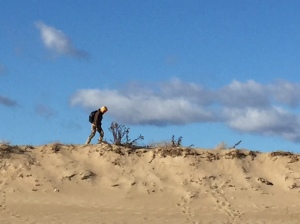
My dear friend and fellow African tracker, Adriaan Louw, developed the 10 Rules of Trailing. I believe they are applicable to most everything in life, not just trailing, see what you think:
- Stay on the trail
- Keep your head up
- Follow the most obvious route
- Don’t get distracted
- Don’t be afraid to make mistakes
- Don’t lose momentum
- Use your senses
- Become a part of the landscape
- Know the animal
- Don’t give up
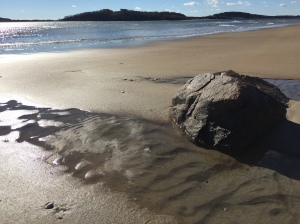
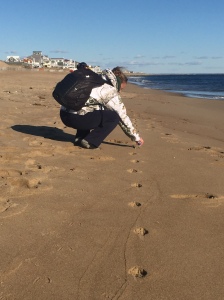
The weather forecast for Sunday was again for high winds, but it was sunny and beautiful at Plum Island, a barrier beach system, and while the wind was certainly a presence it was only half as bad as forecasted. We started with a few beautiful tracks on the beach (posted below), including a little lesson drawn in the sand on telling rodent tracks from frog tracks, then split into small groups and headed into the sand dunes and scrub brush to try and find a deer trail to follow.
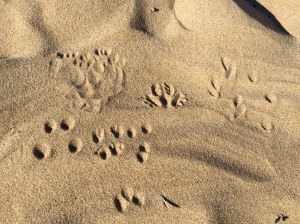
With the wind as such a strong factor against us, none of the three teams found a deer trail fresh enough to follow. Track ageing is, in fact, what I personally consider the 11th Rule of Trailing, and possibly the most important rule. If you don’t know how to tell if a track is fresh or old, then you are going to waste a lot of time trying to follow old trails that fizzle out quickly and are lessons in frustration. Likewise, if you can’t identify when a track is very fresh you might walk right into the animal and startle it. This can be a bigger issue in Africa than here in New England, (and I have personally confirmed this by comparing my encounters with elephants and lions to my encounters with moose and bear) but I’ve heard and read that moose and bear can be pretty unpredictable and aggressive (just not in my experience).
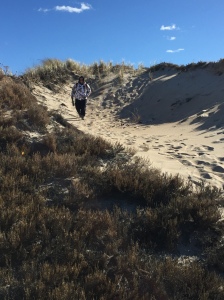
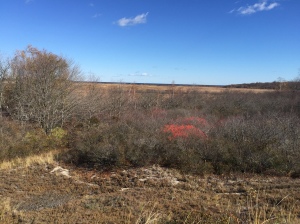
We watched gulls and bald eagles soar over us and had lunch within the smells, sights and sounds of the ocean. We managed to trail foxes, coyotes, and each other for short distances. It was amazing how quickly evidence was erased by the wind. Apprentices refined their “animal behaviors” by doubling back and hiding near the end of their trails, and watching their colleagues walk right by without noticing them – a great lesson in awareness!
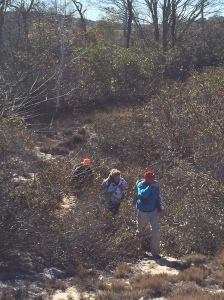
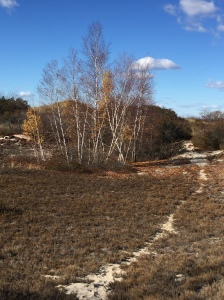
On our trails, Connie, the teaching assistant for the program, and her team of apprentices found a kill site where a deer had been eaten by coyotes and the group was able to examine the area and carcass, and my team and Dan’s both found seal carcasses on the beach to examine. Now, you might think that’s a little gross, but trust me, you get over that really quickly when you become addicted to tracking. A carcass is a treasure! You get to look at feet and study how the foot morphology would appear in tracks, how the skeletal structure affects movement, and how the skull reveals what and how and animal eats. It’s all good stuff to know!
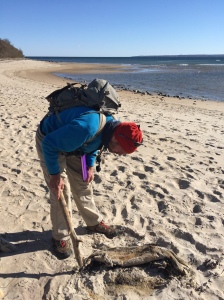

A wise Piney elder, Ingwe (a Zulu word meaning leopard), used to say something like, “The wilderness holds all truth and knowledge,.” I’d add: “if you pay attention and are open to receiving it.” (I’m probably getting that quote horribly wrong, but you get the idea…)
Enjoy the track and sign photos in the slideshow below!
